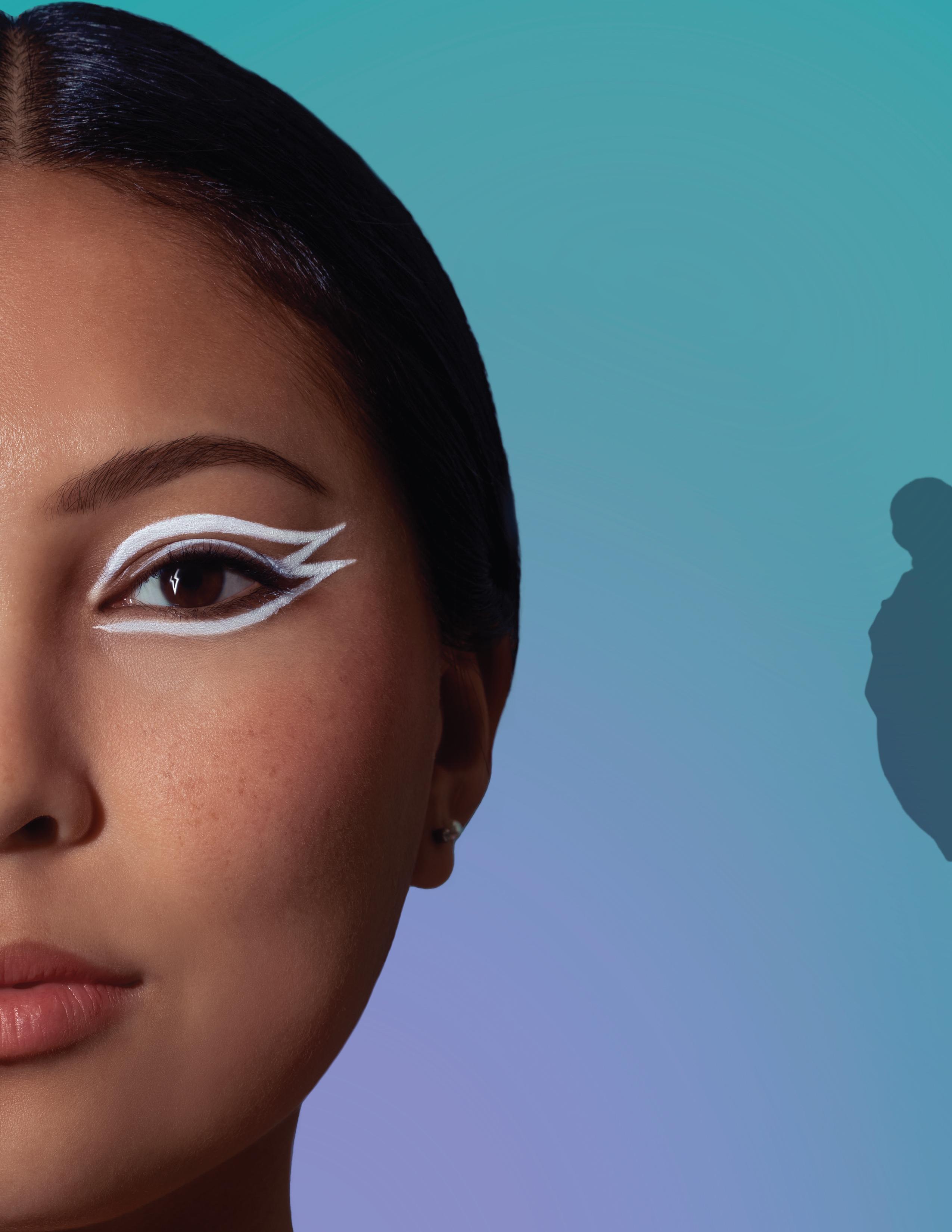






Strike Magazine embodies the idea that we all are striking in our own way. Gainesville is formed by a student body of individuals who are immensely striking in their own ways, and Strike Magazine highlights these unique qualities. Through our diversity, varied life experiences and interests, we each bring refreshing perspectives and visions to the world and to each other. Strike Magazine values the human experience, and we aim to create a magazine that embodies the defining attributes of all people and yields a deep appreciation for fashion, art and pop culture.
Strike Magazine in Gainesville, FL, was founded in March 2018 as the first extension of the Tallahassee publication. Since then, here in Gainesville we have grown to a staff of over 150 students and this semester, we

experienced our first change in leadership. Strike Magazine has also expanded to 6 additional campuses in the Southeast this semester. Strike serves as a creative outlet and source of professional experience for our driven, ambitious staff. We take pride in striking Gainesville as the first student-led publication of our kind.
We, the new editors, would like to thank our team for their consistent passion, creativity and support. We are endlessly inspired by the distinct beauty of each member of the Strike and Gainesville community. Strike Magazine looks forward to continuing to empower our readers to think beyond the norm.
Strike Out, Erin, Annie & Maddy
Strike Magazine’s Issue V depicts the theme “Manifestation.” There are four key moments that we highlight throughout the magazine: experiencing difficulty, introspection, finding balance, and experiencing an awakening. We believe that these four phases represent the manifestation that brought us to our reality at the end of 2020. Throughout this year, our world faced unimaginable circumstances that forced us into isolation, produced a great deal of inward discovery, provided an opportunity to develop our understanding and ultimately led to a cultural awakening.
What an honor to experience the depth of the challenges and triumphs that 2020 brought us. We chose to leverage our unique positions as young adults to lean in and lament, learn, and find joy through our expression in this issue. Issue V furthers the depiction of what Issue IV introduced, life in the midst of COVID-19 and the impact that it had on our society.

 Embracing Expression
pg 9
Mourning the Unknown
pg 15
Under Pressure
pg 17
Return Back to You
pg 29
Sculptured to Imperfection pg 31
Growing through Grief pg 35
Clarity and Care of Coping
pg 43
Fashion Industry’s Awakening
pg 59
Community Organizing
pg 45
Uncomfortable Conversations pg 49
A Sit-Down with Lilly Kline
pg 63
Where Religions Rhyme
Embracing Expression
pg 9
Mourning the Unknown
pg 15
Under Pressure
pg 17
Return Back to You
pg 29
Sculptured to Imperfection pg 31
Growing through Grief pg 35
Clarity and Care of Coping
pg 43
Fashion Industry’s Awakening
pg 59
Community Organizing
pg 45
Uncomfortable Conversations pg 49
A Sit-Down with Lilly Kline
pg 63
Where Religions Rhyme
pg 20
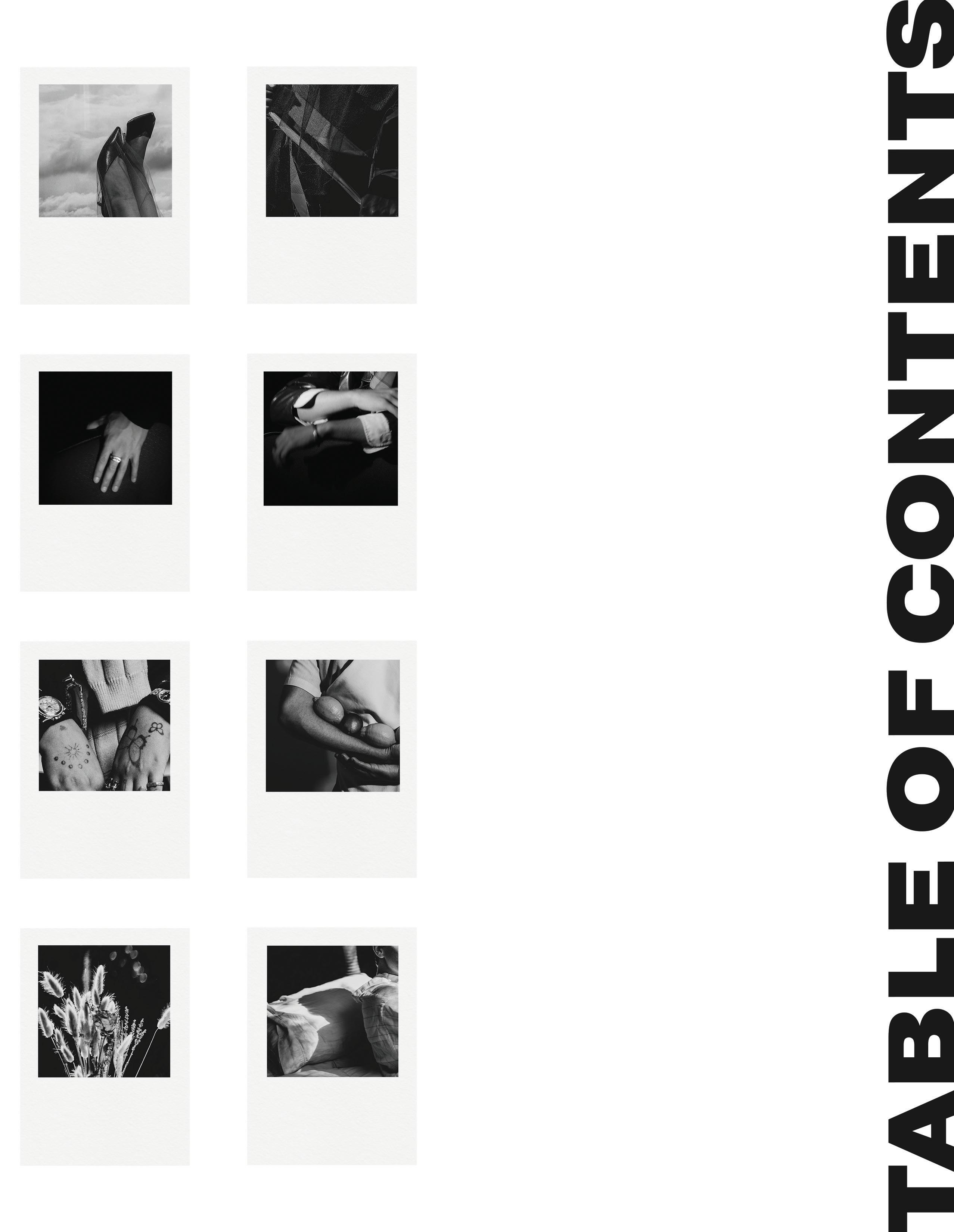
pg 39
pg 23
pg 55
pg 69
pg 72
Are you Emotionally Healthy? Finding Truth in Fiction Shared Experience of Suffering Accomplices over Allies Fighting Fool’s Gold Looking Back to Move FowardPHOTOGRAPHED BY:
Anna Carrington
Stephanie Garcia
Max Jacobs
Malyna Reed
Ryan Rivas
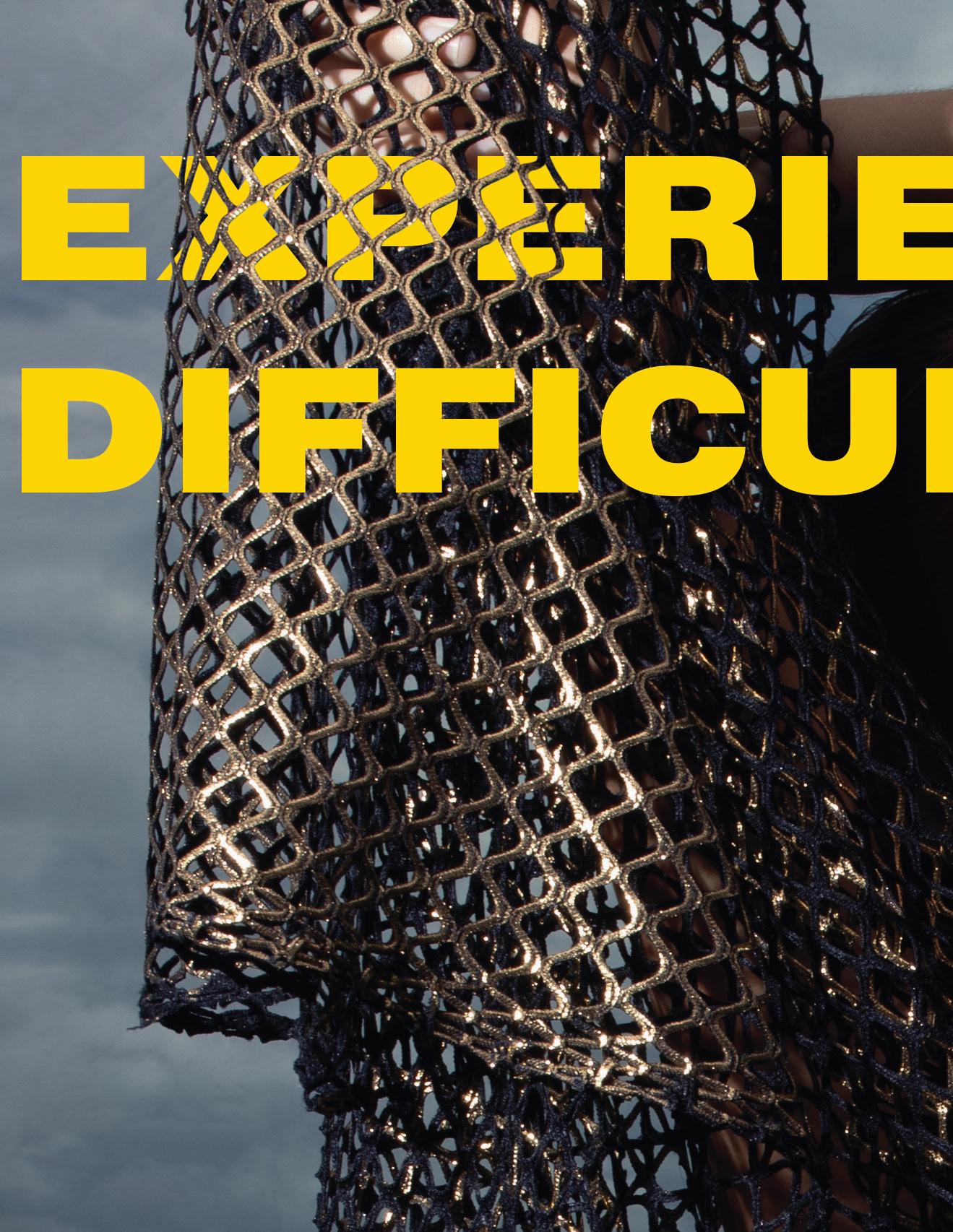



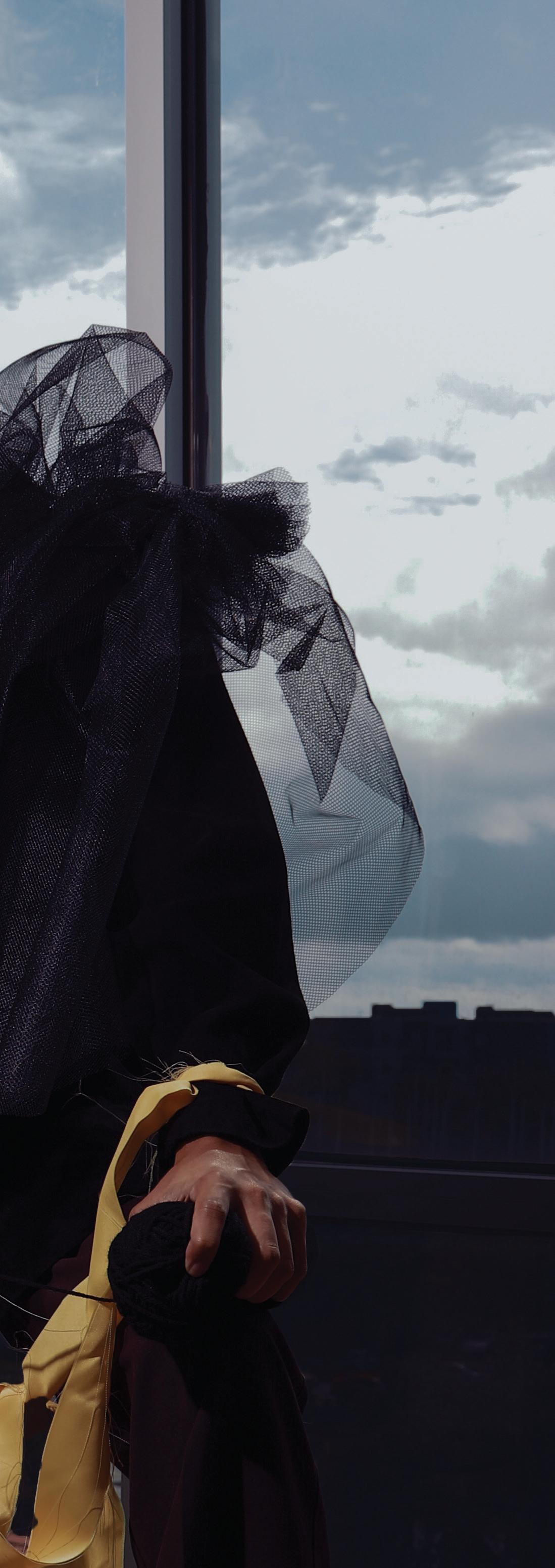 Written by Jacob McLean
Written by Jacob McLean
Balanced, sensitive, interpersonal and confident are a few of the adjectives Amonn Mitchell uses to describe himself. However, confidence isn’t something the 21-year-old public relations major always possessed. Mitchell found confidence through an ongoing journey related to his identity and self-discovery.
LGBTQ+ people around the globe embark on this individualized journey every day. The path to accepting oneself is one filled with fear, trepidation and lots of tears - both sad and happy. While everyone’s road to discovery is unique from onec another, many queer people share experiences that weave together the fabric of their community.
The journey can feel like a never-ending state of confusion in the process of manifestation, but the first step to solving a problem is identifying it. While being queer isn’t a problem, the feelings of bewilderment that come with the discovery and acceptance of it can be the source of feelings of affliction.

The journey isn’t simple. However, it is useful to know where to begin and possess the tools necessary to navigate it.
Mitchell identifies as pansexual, which is characterized by the sexual or romantic attraction that’s not limited to people of a particular gender identity or sexual ori entation. He uses he/him and they/them pronouns, but he said he usually goes by he/him to be proper.

“I don’t want to say I’m some fully actualized person or whatever because there are still some things left

“Not a lot of people will wear a crop top in the grocery store, but I feel like it, so I will,” he said.
Even with his warm personality, Mitchell isn’t a stranger to the discrimination that far too many queer people know, especially in a small town like Gainesville.
Mitchell has always been told he exudes good energy, so people were usually nice to him in high school. Moving to Gainesville forced him to face discrimination head-on for the first time. The discrimination almost always stemmed from the ways he was dressing or expressing himself, he explained. He recalled one particular instance when he was called the f-slur by someone passing in a car as he walked near campus.
Mitchell works to remain unscathed by any form of discrimination and negativity. A bigoted person saying something to him has never thwarted him from wearing less or more, so he doesn’t let it haunt him, he said.
“At the end of the day, if I hold onto that then it’s not going to serve me,” he asserted.
This is where the concept of toxic masculinity comes into play. It teaches boys that they can’t express emotion openly, that they have to be tough and that anything other than that facade makes them feminine or weak.
“Our demons come from our childhood,” he said. This mirrors Mitchell’s outlook on where these behaviors take root, specifying that he believes it happens during the formative years of people’s lives.
He highlighted a particular moment when the message of “gay is not okay” was heard often, a moment familiar in many queer individual’s youths. The feelings of apprehension that someone experiences from that notion and a person’s need to protect themselves from it contribute to toxic masculinity, he said.
Mitchell acknowledged that we’re experiencing an era of change. He sees it in how the lines separating stereotypical gender roles are now becoming more blurred, how more queer people are being elected to Congress and how more straight, cis-gendered people have joined the queer community when it comes to pushing boundaries in the realms of fashion and beauty.
The push has also come from several male celebrities like Harry Styles and Bad Bunny, who’ve taken leaps to push beyond the stereotypical gender
roles prescribed by society. The latest example being Styles’ cover shoot for Vogue’s December 2020 issue, in which he graced the cover draped in a pale blue, lace-trimmed Gucci gown paired with a double-breasted tuxedo jacket.
Mitchell expressed mixed feelings concerning this topic where straight men can flaunt fashion choices that queer people have faced vitriol and violence for.

“Honestly, I do believe these artists are queerbaiting,” he said. “At the same time, they are pushing boundaries and starting a conversation.”
Mitchell explains the queer community should support men like Styles and others who are initiating conversations resulting in cis-gendered people opening up to pushing boundaries. However, they shouldn’t be revered as queer icons when they’re not nec- essarily part of the com- munity.
Mitchell has taken colossal strides in his journey of figuring out who he is and
how he identifies within the queer community. He said he agrees with the fact that the path every queer person takes in figuring out their identity is a highly individualized experience. However, he took some time to share what helped him navigate through this state of confusion, which he believes could potentially help other people who are currently grappling with their identity.
Mitchell first stressed the importance of research for someone who’s struggling with identity issues. The internet is a source of bound - less information concerning the different communities within the queer com- munity.
Podcasts, like “Marsha’s Plate,” have helped Mitchell learn about different individual’s stories in the queer community, he said. Named after Marsha P. Johnson, who was a
prominent transgender figure in the 1969 Stonewall uprising and the subsequent Gay Liberation Movement, the podcast highlights stories of people in the queer community and explores culture through a transgender lens.
Cinema and documentaries also helped Micthell navigate confusing times, he said. Starting with documentaries like “Paris is Burning,” which explores the elaborate drag competitions of the ball subculture of New York City later embodied in Ryan Murphy’s “POSE,” helped the way that he viewed and traversed the queer community, he said.

“There was a period of time when I was just watching anything that had two gay male leads, and that was it,” he said.
Watching TV shows and movies that centered around the queer experience rather than those featuring a stereotypical, cis-gendered gay character led him to figure out where in the queer community he identified.
While emphasizing research, Mitchell pointed to proper research. He highlighted how the sex-driven feelings of questioning people, especially in their youth, can lead to research he said he believes to be superficial. This includes pornographic material, which he explained can lead to image issues and unrealistic expectations when it comes to body positivity and sex.
Furthermore, he stressed the value of discussion and talking about one’s feelings of confusion -- only when they’re ready, of course. The significance of finding a person you trust is paramount. Specifically because of how personal the topic is when someone is questioning themselves, he said. The benefits one can attain when they begin to open up to someone else can ultimately lead them to explore who they truly are.
“Once you let that go” and embrace your truth overtly, he said, “it opens the door to being open with yourself.”


 Written by Kara Kennedy
Written by Kara Kennedy
Without question, there has been considerable loss over the past year - lives lost, businesses shut down and families separated for months on end. Simply put, we are all living in a world that most of us could not have envisioned. In a year spent flattening the curve of COVID-19, quarantining and avoiding at-risk family and friends remains the best adversary to the virus. As we have come to know, this means less time together physically and more time in solitude navigating these changes alone.
In these unprecedented times, turning attention to our losses and recognizing moments we have missed feels almost like a personal luxury and, at times, unworthy of recognition when others are dying. As a college student, and more specifically a college senior, I feel sorry for myself for having to miss out on regular senior events but also realize how much worse things could actually be. In those moments, I can take a step back and see how in the grand scheme of things, we are pretty lucky. However, there is value in recognizing loss. According to experts, recognizing these disappointments in our personal lives is a significant step in the collective healing process.
According to Thema Bryant-Davis, a licensed therapist and motivational speaker, holding others’ grief above our own prevents us from honoring our own emotions and validating our feelings. This can lead to deeper sadness, depression and anxiety. This is not to discredit other people’s emotions; empathy is a valuable, beautiful skill that enhances the well-being of both those who give and receive it. However, we can’t pour from an empty cup-- we can’t be there for others when we’re not taking care of ourselves first. This care begins when we validate our own emotions. In taking a step back, recognizing our sadness and realizing it is okay to feel disappointed, we can begin to grieve our losses. It isn’t a personal luxury we can afford to skip out on.
Whether it be sitting down at your first corporate internship, cheering on the football team with all your
might or even walking the stage at graduation, we are all missing milestones. The loss of these experiences isn’t something to downplay. For seniors, we have no option but to accept that this isn’t the final year of college that we thought we were going to get, and it is totally fair to grieve that. In these moments of frustration and sadness, it is important to talk through these feelings. One of the best ways to deal with our sorrow and fear of missing out is to find someone who can relate and, well, vent. Talk to each other, listen to each other, immerse in good and bad experiences with each other. Expecting something to go one way for so long only to have those expectations not be met can lead to frustration. Journaling your feelings and experiences can produce the same effects. Journaling can ease frustrations as you translate your emotions onto paper. It can also inspire self-reflection and gift us some much needed and deserved alone time. Lastly, coming together with friends in any capacity can alleviate some of the social deprivation we are feeling. Texting a friend you miss, an outdoor coffee date, or going for a walk with friends are ways to stay social yet distanced. Listening to our bodies and being social, in whatever context that may mean, is key to dealing with anxieties that come with living through a pandemic.
Not to say this is something we can deal with overnight; however, there is a light at the end of the 2020 tunnel. After recognizing this year is different from anything we’ve ever experienced, we can begin to assess how we can make it as enjoyable and memorable as possible. Traditions that feel integral to the college experience may have to change. For example, one might spend Friday nights at Depot Park with a picnic blanket and a bottle of wine instead of The Backyard. Of course, we will miss seeing our peers in person and the people we have been in classes with since freshman year. We will miss the tailgates and sitting in Library West without a mask on, but we still have the opportunity to make memories to tell our kids about. They will just look a little different than we planned.


Bum bum bum bum ba da bum
Bum bum bum bum ba da bum
Can you hear the Queen and Bowie bass line?
“Under Pressure” may have been written in the ‘80s, but its message resonates with the modern youth.
From a college student’s point of view, younger generations bear an unprecedented amount of weight on their shoulders. The pressure, it seems, comes from all angles. It’s relentless, layered and hard to pinpoint. You feel it from society, beckoning you to fall in line with its standards. It resides internally with your own thoughts, convincing you you’re not good enough; not doing enough. You hear it from family insisting you to live up to their expectations; threatening you with their disappointment. Pressure pierces through screens, showing you the perfection and successes of your peers, exacerbating any insecurities.
A twenty-something in 2020 has to maintain composure while feeling the world is crumbling around them; whether it be from a global pandemic, the climate crisis, or a national recession--just to name a few. With all of that in mind, it is easy to forget those are just the issues of the moment. For a college student today, chaos has been the constant in their life. These are kids who grew up in an era with normalized school shootings, the ones who grew up during the war on terror and blossomed alongside social media. For them, there is no time to process the latest tragedy. They’re expected to brace for the next. And still, young people prepare for continually rising expectations in a labor market that offers less and less payoff for graduates. Add your choice of complications, whether that is working a low-paying job or unpaid internship, dealing with a rising cost of living or trying to maintain a social life, and you’re starting to feel the pressure.
But then there’s diamonds. Doesn’t a heap of pressure produce some of the most dazzling things? When we are tested and pushed to our limits, do we not achieve the best outcome? Like in times of war, are we not our most innovative and resourceful when the most is asked of us?
In short, my answer is no.
Humans have strayed far from the survivalist mindset our brains are programmed for. Even compared to the past few decades, there has been a shift in expectations and lifestyle for today’s youth. A 2019 study
by the American Psychological Association found that perfectionism has increased in millennials and in generation z due to “more competitive environments, unrealistic expectations and more anxious and controlling parents.” This generation yearns for the simplicity past generations had growing up; the time when a college degree was worth its weight in gold and pensions existed. Today, employers want three years of experience for an entry level position. The past may have offered a clear lane towards success, but it now feels like the starting line has been moved back, and there’s more hurdles on the track.
Ultimately, today’s world operates at a faster speed… and pressure is a brick on the gas pedal. Technology is more integrated into our lives than ever before; and in this age of social media, news is instant, what’s private is public, and constant connection is the expectation. Even amidst COVID-19 while being bombarded by an endless panic-inducing newscycle, the message to young people remains: be productive, learn a skill, find a side hustle.
The pressure we talk about may be abstract, but its damage is tangible. With the right amount, there’s a chance to come out nice and sparkly. However, add too much, and there’s the risk of crumbling, cracking and turning to dust. According to Mayo Clinic, the effects of stress can affect your body, mood and behavior. It can lead to changes in eating habits, substance abuse, sleep problems, muscle pain and feelings of anxiety and depression. This generation is plagued by mounting stress, and its effects are shown through a decline in mental health. In a 2019 Pew Research Center survey, 70% of U.S. teens said anxiety and depression was a major issue among their peers. Unfortunately, for young people, these issues seep into most areas of life, like our school, work and social settings.
Pressure has its place as a motivator, but it should have limits. To be constructive, it needs to mold its subject, not break it. As the largest, most diverse, and most educated generation, it is now up to Generation Z to create a world where the balance is restored and people can be driven instead of stifled by pressure. Together, let’s give ourselves permission to release. Let’s actively alter the narrative to value our health and happiness. Then, we can find our way of making peace with the challenges of the world. Let’s seek out solace, whether through religion, spirituality, self-care or meditation, and take comfort in knowing we all feel it too. In embracing and sharing this outlook, we can accept that in some ways we need pressure, but just enough to keep our feet on the ground.



In this season of life, we’ve lived in isolation, lost loved ones and panicked over the complicated future that remains unknown. While states continue to monitor COVID-19 numbers, issue health ordinances and distribute testing materials to every city in the country, we’re surrounded by CDC health guidelines and overwhelmed with fear and hysteria. Unsurprisingly, we’ve never felt so emotionally volatile.
The nature of isolation is, well, isolating. For many in the United States, November marks the ninth month living in quarantine or strict social distancing. For every 1 in 4 Americans struggling with mental illness, this collective trauma combined with the seemingly endless time alone has even the most enlightened emotional gurus questioning their mental sanity. While we are all strictly monitoring our physical health during this time of mask mandates and hand sanny habits, it’s essential to check in with yourself and ask, “Am I emotionally healthy?”
It is important to note that emotional health does not equate to happiness. In reality, it’s far from it. Emotional health is the power to recognize the various emotions we will feel throughout our lives -- both highs and lows -- and actively manage their respective balance. Even the most introspective will have bad days; they are part of life. However, even as we move through the natural ebbs and flows of emotional health, we can work to better observe and acknowledge the emotions that make us the most reactive and volatile. With self-awareness in hand, it’s essential to identify the five signs of emotional imbalance in our daily lives to begin this journey to the land of self-love. So hop in. It’s time to go introspecting.
An emotionally unhealthy person will approach new situations or people with a critical eye, collecting surface-level judgments towards others over a short period. Essentially, this person is too emotionally responsive to their external environment, trying to “correct” various situations with criticism. Rather than viewing these situations as removed from one’s self, the person is determined to attempt to correct them by projecting judgment. Ultimately, this need to correct external stimuli lies in internal insecurities and emotional imbalance. On a day-to-day basis, this may look like snapping at close family members, disapproving of friend’s behaviors or even gossiping
about others in repeated social situations. Moreover, this behavior may manifest in holding grudges and resentment towards others, or even life itself. Over time, this judgemental, negative energy seeps into our daily thoughts and habits -- tipping our emotional scales towards imbalance.
As college students, it’s natural to have goals for grades, extracurriculars and personal growth. At a top 10 public university, ambition is expected; but between overbearing parents and professors, these expectations are often overwhelming as is--not including personal expectations for oneself. As someone that struggles with this symptom the most, I find myself unwilling to settle for anything less than what I believe I can accomplish. However, this feeling is typically accompanied with the pervasive feeling of not being good enough, needing to overcompensate with material achievements to feel a sense of wholeness. With low self-esteem and self-confidence, the emotionally unhealthy person wholeheartedly believes they fail in several aspects of their lives— and seeks to correct these behaviors with overcritical expectations and standards for oneself. If these expectations aren’t met, the inflictor feels devastated, unaccomplished and unworthy. With self-deprecation in hand, the pattern of upholding unrealistic expectations and failing to meet their impracticality continues in a toxic cycle, as the failure to meet

these goals results in the feeling of not being good enough. Thus continuing the cycle of setting critical, overbearing expectations for oneself.
3
Self-sabotaging actions are typically inflicted on oneself in the pursuit of pleasure-seeking behavior. Within this sign of emotional unhealthiness lies the desire to feel short-term happiness -- or in many cases, the hope to not feel anything at all. In the process, the inflictor suppresses their emotional turmoil resulting from areas of unresolved trauma; thus, never solving the root of the problem to set in motion long-term healing. Common examples of this behavior include excessive intoxication, addiction and seeking out unfulfilling, toxic relationships.
4
This symptom of emotional imbalance is one of the most difficult to recognize, as it often occurs subconsciously. In psychology, projection is a common defense mechanism used to cope with internal feelings, conflicts and desires. Rather than facing the uncomfortable feelings that live rent-free in our psyche, we project these emotions onto others. These complicated emotions-shame, guilt, anger, jealousy, anxiety --may stem from childhood traumas and past experiences manifesting. Ultimately, we experience life through the frame of reference we’ve created
through past experiences and memories. However, with emotional projection, we assign this frame of reference to our current realities, designating present situations to have a set, determined outcome based on past experiences, emotions and insecurities. If your thoughts are ruling your realities, you may be projecting insecurities on new opportunities and situations.
5
If you find yourself making excuses to avoid social interactions with strangers, friends, roommates or family members, you may be self-isolating. While quarantine naturally brings about periods of solitude in the physical sense, it’s important to not emotionally distance yourself during a time of collective, global trauma. Common signs of social isolation include dodging emails, texts and facetime calls from close friends or turning down socially-distanced interactions. Ultimately, self-isolation comes from a place of self-preservation and protection. After all, you can’t be emotionally vulnerable with others if you avoid the interaction altogether.
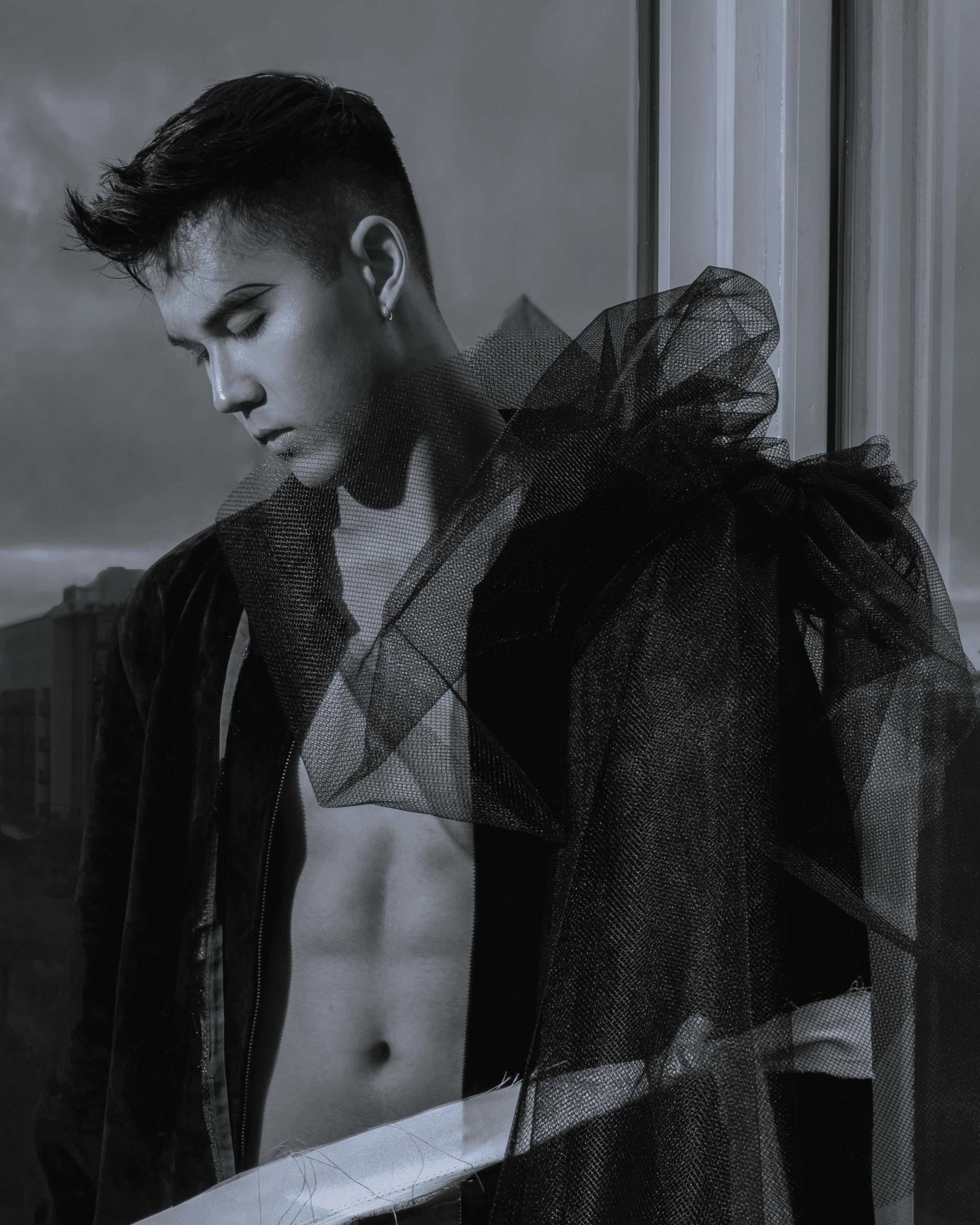



Storytelling is humanity’s most powerful weapon. We’ve all been impacted by a good story, whether it’s a masterfully written work of literature or our favorite Netflix original series. While entertainment is deemed a “nonessential” activity we can enjoy in our freetime, the stories we consume are crucial to how we interpret the world.
When a compelling narrative warrants our attention, the magic of fiction can transport us anywhere, from the smoldering ruins of ancient castles to the labyrinthine pathways of enchanted forests. In this storytelling process, our understanding of our surroundings is reliant on the interpretation of the story’s protagonist, who is responsible for introducing us to the worlds they inhabit. It’s difficult to comprehend how different our life experiences are from the people around us. However, being immersed in the protagonist’s perspective gives us a chance to glimpse the world through another person’s eyes, highlighting others’ struggles in a way we may not experience firsthand. Even when weaving fantastical tales of glass slippers and poisoned apples, storytellers need to reflect on the experiences of real people for their work to resonate with audiences. If we see it on a screen, we can see it within ourselves.
The power of stories makes our entertainment more than just “entertaining” – it gives us the tools to identify the most prevalent problems in our lives and our culture.
Movies like “Moonlight,” a coming of age story following a young, gay Black man’s journey through adolescence, can call attention to societal problems by allowing us to empathize with its characters. The movie addresses issues like police brutality against Black Americans, toxic masculinity, homophobia and systemic racism by allowing audience members to view how they impact its protagonist, Chiron. By framing these concepts in an emotional narrative, “Moonlight” emphasizes the individual tolls these injustices inflict and inspires people of different backgrounds to grasp the various struggles of Black, queer indiviuals.
Moreover, entertainment can improve our understanding of our own internal struggles by depicting invisible battles. The movie “The Perks of Being a Wallflower” delves into its protagonist Charlie’s battle with PTSD. Throughout the film, we witness Charlie cope with the trauma of his friend’s suicide and pre-
vious sexual assault, while simultaneously attempting to break out of his shell and have “classic” teenage experiences, like friendship and first love. However, Charlie’s severe PTSD inflicts an array of triggers and symptoms, including lashing out at his peers and breaking down when his new friends graduate at the end of the school year. By depicting the complicated aspects of trauma warping Charlie’s adolescence, the audience is able to witness the ways in which invisible mental illness impacts Charle’s high school experiences. Rather than shying away from the reality of trauma and its symptoms, the film blatantly depicts Charlie’s blackouts, depression and anxiety. For audience members suffering from their own mental health battles, witnessing accurate representations of mental illness can allow them to identify these symptoms in themselves and potentially help others make the decision to seek out help from a mental health professional. Ultimately, this movie depicts the struggles and realities of mental illnesses for both those who live this reality every moment, and for those who may haven’t experienced trauma first hand. By illustrating internal battles that are invisible to an outside eye, “The Perks of Being a Wallflower” encourages neurotypical people to empathize with those suffering from the effects of PTSD and mental illness. Rather than encouraging viewers to shy away from these problems that were once considered taboo, the movie fosters open communication about the importance of mental health. The more we communicate about our internal battles, the more we’re reminded that we’re not alone in fighting them.
While entertainment is gaining traction as a way to promote awareness of societal issues, not all creators are careful and considerate with their representations of people’s struggles. Like any powerful weapon, storytelling can inflict incredible harm when wielded irresponsibly. Writers who aren’t careful when working with sensitive subjects can employ inaccurate tropes and stereotypes that deal incredible damage to society’s understanding of the problem. Words are powerful - failing to acknowledge the extent of their potential can lead to disastrous consequences.
Shows like Netflix’s “13 Reasons Why” earned a reputation for doing harm in their depictions of mental health -- most notably, with their representation of character Hannah Baker’s suicide. The show’s first season follows protagonist Clay Jensen uncovering the reasons for Hannah Baker’s suicide within the tapes she recorded explaining the 13 reasons for her taking her own life. However, the show received mass

criticism by mental health experts for their portrayal of suicide as a method of revenge. Furthermore, the Netflix original series characterizes adults as being unwilling to help teenagers experiencing mental health crises and included a graphic depiction of Hannah’s suicide. While the creators intended for “13 Reasons Why” to help struggling teenagers, according to the National Institute of Mental Health, suicide rates among kids ages 10 to 17 increased 28.9% in the month following the show’s release. By failing to consider the potential ramifications of using suicide as a plot device, the writers ended up harming the vulnerable demographic they’d been trying to reach.
While there are plenty of issues that Hollywood has failed to depict accurately, racism is among the most misrepresented. Rather than addressing the truth of racism’s prevalence today, many studios water down race-related stories into solvable narratives to bring comfort to white audiences. “The Help” is a perfect example of this narrative, as the film aims to depict the struggles of two black maids experiencing racism while working in Civil Rights era Mississippi. While the story’s central conflict revolves around the maids’ distress, the story actually centers on a white woman writing a book on their experiences. Unfortunately, “The Help” is guilty of employing the white savior trope, which refers to the trend of white characters rescuing BIPOC characters from the threat of racism. The danger of this trope is that it places white characters at the forefront of the narrative and prevents BIPOC characters from being active members in stories about their own traumatic experiences. By creating the idea of the “good white person” who can fix the problem by defeating the racists, the trope also reduces racism to the actions of a few bad individuals
instead of addressing its systemic nature.
White savior movies fail to represent the problem because they water down racism to appeal to white audiences and give their movies a simple, happy ending. While they may highlight that racism is bad, their overt simplification of the issue feeds a lack of awareness of the problems BIPOC communities actually face. When white audiences are only shown lies about racism being “solved” in the media they consume, they’re unable to understand how white privilege has completely colored their understanding of the world. While a movie may not be able to dismantle a complex system of oppression, crafting easy-toconsume entertainment that upholds that system prevents people from understanding that racism is systematic, traumatic and still exists today.
Entertainment is a powerful tool for exposing difficulty, but inaccurate representation buries the truth of the real struggles people face. Rather than ignoring sensitive subjects, it’s essential to acknowledge these discrepancies in the media and pass the megaphone to individuals who can freely and honestly tell their stories. White savior movies, including “The Help,” are helmed by white people whose privilege prevents them from accurately representing the reality of racism. Giving BIPOC creators more chances to tell stories, like “Moonlight,” would result in more movies being made actually addressing the authentic truth. Allowing people who’ve pulled through mental health crises to contribute to mental health narratives would ensure that people aren’t being fed misinformation about suicide and trauma. For audiences to actually understand that there’s a problem, we need to present honest storytellers with a platform to reflect the unfiltered truth. When the trials of real people are truthfully mirrored in our media, storytelling can finally reach its potential for greatness.





PHOTOGRAPHED BY:
Brieanna Andrews
Samy Asfoor
Paige Davis
Max Jacobs
Johann Vasquez


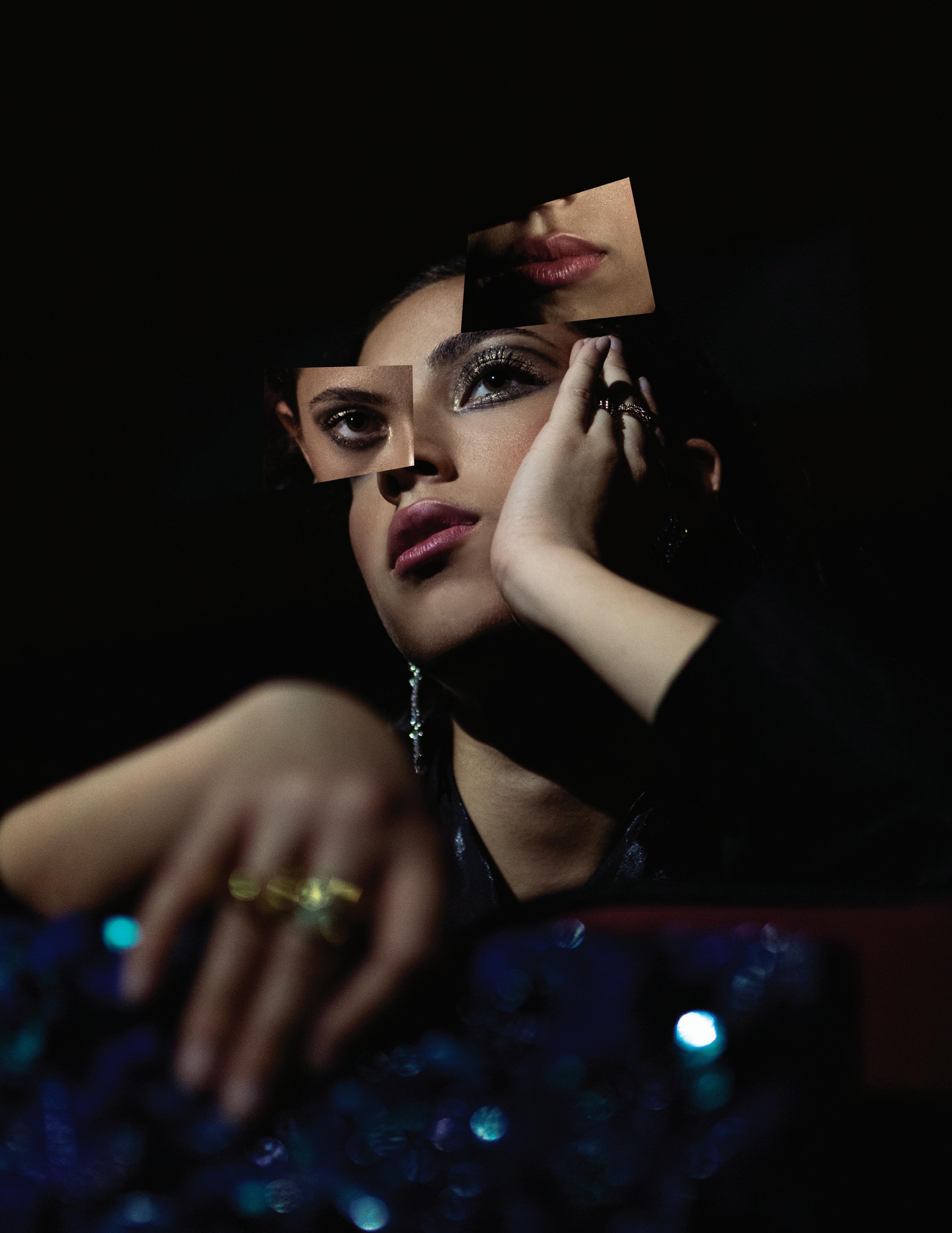
Unclench your jaw. Relax your shoulders. Breathe. How do you feel? Hopefully, you feel better. Presumably, you didn’t know you needed to check in with yourself. Why should you? These actions are often involuntary. We open our jaws to speak truth and sing at the top of our lungs. We shimmy, shrug and slouch our shoulders. Regardless if we’re waking or dreaming, our lungs are expanding and contracting. We exist; we survive.
However, our bodies are more than their mere movement. They are remarkable, resilient beings. Ones that, like our minds, have a value and purpose that surpass survival. We are more; we deserve more. We are here to live, to become the best version of ourselves and to tune into these natural processes and make them worthwhile.
The tension in our bodies that yearns to be released through mindful relaxation is often a manifestation of the ever-present emotions we experience. Emotions can be beautiful— the smiles that effortlessly glide across our faces, the butterflies that flutter in our stomachs, the bliss in our backs when we collapse into bed after a long day. Emotions, however, can also be painful— the pain that stings our heart, the stress that grips our muscles, the anxiety that strangles our breath.
Whether it be beauty or pain, be present with it. Get to know yourself and your emotions. Sit in a chair, close your eyes and fully immerse yourself into that moment. No distractions, just you. Unclench your jaw, relax your shoulders, and breathe. Then, identify how you feel. Do you feel any tension in your body? Of course, you do. Identify it, then, gently shift your focus to that part. What does it look like? Does it have a color, name or associated experience? Be brave; dig deep. Wiggle your toes and trace your fingers to ground yourself, keep digging. Why do you feel the way you feel?
Open your eyes, breathe, and reflect. Navigating our emotions can inspire more feelings than the ones we sought to learn more about at the beginning of the journey back to ourselves. This may seem overwhelming, but it’s important to give grace to these feelings, too. Be present, practice patience, feel what you need to feel. Once you’ve recognized and processed your emotions, it’s time to release them. This is the fun, freeing part.
Now, send the tightness in your neck, the hurt in your heart, the shallowness of your breath, and any other feeling that hinders your physical and mental joy into the universe. Thank these emotions for their experiences, then, let them go. Even the pain you’ve normalized and found comfort in, yes, release it. Sorrow may be how you feel, but it’s not who you are.
Tension has no place in a world where we strive to live rather than exist, so it’s important to create boundaries after your brave release. No need to construct barbed wire or picket fences, just cultivate enough mindfulness to decide what feelings can freely flow into your life. Who is welcome? What authority do our emotions bear? We can’t control what happens to us, but we do have a say in how we respond to life and the amount of power we give to its occurrences. Boundaries will ensure your moment of mindfulness will outlive said moment. Keep practicing this, keep checking in with yourself, keep breathing.
The greatest lie we can tell ourselves is that we don’t have time to take care of ourselves. However, this time - if not but a moment - is also the greatest gift we can give ourselves. In mapping out our emotions, we learn more about our past, present and future selves. Whoever that may be, spend time with them. Be brave enough to accept and embrace your humanness.
Recognize. Release. Return back to you.

Walking into most retail stores may as well be a trip into Aphrodite’s dressing room. Perfectly fitting outfits frame figures as flawless as goddesses. Plastered on every wall, idealized images of human perfection are made indistinguishable by their cookie-cutter physicalities. People cannot help but wish these were mirror halls reflecting a form of their own epitomized, statue-like and chiseled physique. These desires are inevitably left unsatisfied. All the magic in myth can’t change that mortals dwell among other mortals — far cries from what godly images idealize. Like Narcissus, but deprived of infatuation, self-satisfaction is replaced and plagued with self-deprecation.
But those left hurting fail to realize they are standing in a hall of mirrors. Only it’s not on Olympus — it’s at a carnival.
Advertisements of widely unachievable and edited idealism, made up of digital alterations that set unrealistic expectations of largely inaccessible proportions, operate like funhouse mirrors; anyone who enters with a common physicality is greeted with distorted versions of themselves. An exaggerated feature here, a warped limb there, and the reflected human physique is virtually unrecognizable.
The average shopper leaves the funhouse feeling emptier than when they walked in, but with shopping bags filled to the brim in hopes that the advertised products will work on them like Midas’ touch. Consumers have been fed false promises that are more intoxicating than any lotus and more deceitful than a Trojan horse. By that point, it may not matter; their ideal self-image — their city — has been hijacked. Just as tragically, amid a folly of false standards, shoppers are left thinking they’re as off-putting as Hephaestus.
Fashion and beauty companies have churned altered images of “perfect” bodies for ages, creating a lessthan-perfect standard of appearance. It’s no secret that it’s an issue. However, increased awareness has inspired action.
Campaigns like Glossier’s Body Hero line have taken the tone of Spartan-like defiance in the face of unrealistic body imagery. Expanded since its 2017 debut through a partnership with athletes from the Women’s National Basketball Association, it harps on the tag-
line “You deserve this,” which beautifully dismisses mainstay standards of the industry by showcasing its products on models of all body types. The campaign’s images proudly and closely display muscular, slim and curvy physiques no one ever need be ashamed of and — in true marble-sculpted fashion — entirely in the nude. It’s alluring and, most importantly, it’s without the smoke and mirrors of a traditional ad campaign.
Other brands like Telfar have taken to social media with grounded promotions of unabashed displays of all body types, going as far as reposting unaltered pictures and videos of its own consumer base sporting its merchandise instead of emphasizing doctored advertisements. This open-arms messaging fittingly aligns with the NYC-based, gender-neutral brand’s slogan: “Not For You — For Everyone.” The company’s explosion in popularity and recognition can, at least in part, be attributed to this liberating perspective. It doesn’t take an oracle to see why this candidness is easier to identify with than myth or fiction and, with success like this, more companies are catching on.
Finally breaking formation and spearheading body realism into the mainstream, even superstores like Target have cast aside unrealistic body standards. Like Glossier, it began its true overhaul in the mid-2010s, but it has reaffirmed the message as a staple of its image and not just a fad. Supplementing its smaller mannequins with average- and plus-sized alternatives, the big red dot is stunningly refreshing among other retailers that still need to play catch-up.
Being able to internalize that positivity and channel it into self-love is essential when surrounded by false idols. With efforts like these in place, it has become less overwhelming for the average consumer to appreciate and identify with attainable body standards in an industry hellbent on achieving beauty. They’re a reminder of precisely that: perfection — fake flawlessness — isn’t beauty.
It’s easy to get lost in a chamber of reflection, but the walls are false. Don’t mistake a circus for the Labyrinth. Look for those helpful reminders, and be kind to yourself.









Trauma. It was something I only saw portrayed in television shows or films, people’s experiences dramatized on digital screens. Until I was 17 years old, I subconsciously believed I would only see trauma through the eyes of others. However, on February 14th, 2018, I was forced to confront it with my own. It began like any other joyful Valentine’s Day, until two hours after I entered the last class of the day and my life changed forever.
I’ll never forget the two hours I spent coiled up on the auditorium floor. Initially, I was certain it was a code-red drill gone wrong, but as sirens and gunshots wailed in the background, I had to accept reality. There was a mass shooting at my highschool, Marjory Stoneman Douglas, and 17 people were killed. I frantically checked Twitter; news reports of 50 people being shot in the very building I was in flashed in my tearful eyes. Once the school was cleared, I met eyes with my best friend of 10 years who held my sister close to his chest. I felt incredibly
lucky at that moment, but also terribly guilty as I knew many people would not be given that reunion.
Initially, I attempted to heal through action instead of acknowledgement. I boarded a bus headed to the state capitol only a week after the event, ready to lobby against gun violence. I flew to NYC and DC to remind myself that life outside of Parkland existed and was continuing on despite our tragedy. Surrounded by gun violence survivors from around the nation, I nervously walked back into my high school after the tragedy. It no longer felt like home to my favorite classrooms or the place where I met my best friends -- it was a crime scene, triggering the all too recent memories of gunshots and wails. I anticipated that walking into Majory Stoneman Douglas for the first time since the event would bring about the worst pain, but once I conquered my return to the scene of the crime, the worst pain would pass and my road to healing would finally begun. Despite my
determination to heal and grow stronger, someone reminded me the worst affliction from trauma can arrive unexpectedly and much later. Ultimately, I refused to acknowledge the severity of my trauma. I desperately prayed that returning to life as usual would bring about a feeling of normality. I fixed my gaze on my future -- the only thing I had left in my control and felt particularly grateful to have.
A couple years passed, and just as I began to find hope in my future, one where my trauma was simply a distant memory, the COVID-19 pandemic arrived to taint my yearnings and drown me in my past.
Being alone in this period of quarantine was detrimental to my mental health, as it finally forced me to face the pain I had been running from. I saw thousands perishing at the hands of COVID-19, and I was reminded of the 17 people who were killed at my school. I finally felt what I was warned about: the delayed, unbearable pain. I was reminded of the faces of those lost, the same faces that greeted me in class each day plastered my mind. The sound of the girl screaming over her killed friend came back in a piercing tone. This time, however, I didn’t push it away. This time, I garnered the strength to face
it. I knew the pain was inevitable and the longer I put it off, the deeper I felt it. Once I allowed myself to grapple with the pain inside of me, I was able to understand that this trauma was still actively impacting me. I realized the validity of my feelings, I allowed myself to admit that I wasn’t weak-- I was angry, anxious and grieving. Rather than allowing these emotions to define me, I transformed it into a power that pushed me to be passionate and to fight for children to safely return home from school everyday. Contrary to what I believed at first, it was through the acknowledgement of my grief that I was able to take action and advocate for others.
Coping is unique to every person who experiences trauma, and it is highly dependent upon their circumstances. A key aspect of overcoming trauma is having the capability to look inward and recognize how you can help yourself. Being present with my trauma inspired growth. This stemmed from my darkest pain, yet it enabled me to discover a different, brighter version of myself. Nevertheless, I eventually learned the most impactful way for me to help me heal was to allow myself to simply see that I still needed to heal.


“THE MOST IMPACTFUL WAY FOR ME TO HELP ME HEAL WAS TO ALLOW MYSELF TO SIMPLY SEE THAT I STILL NEEDED TO HEAL.”
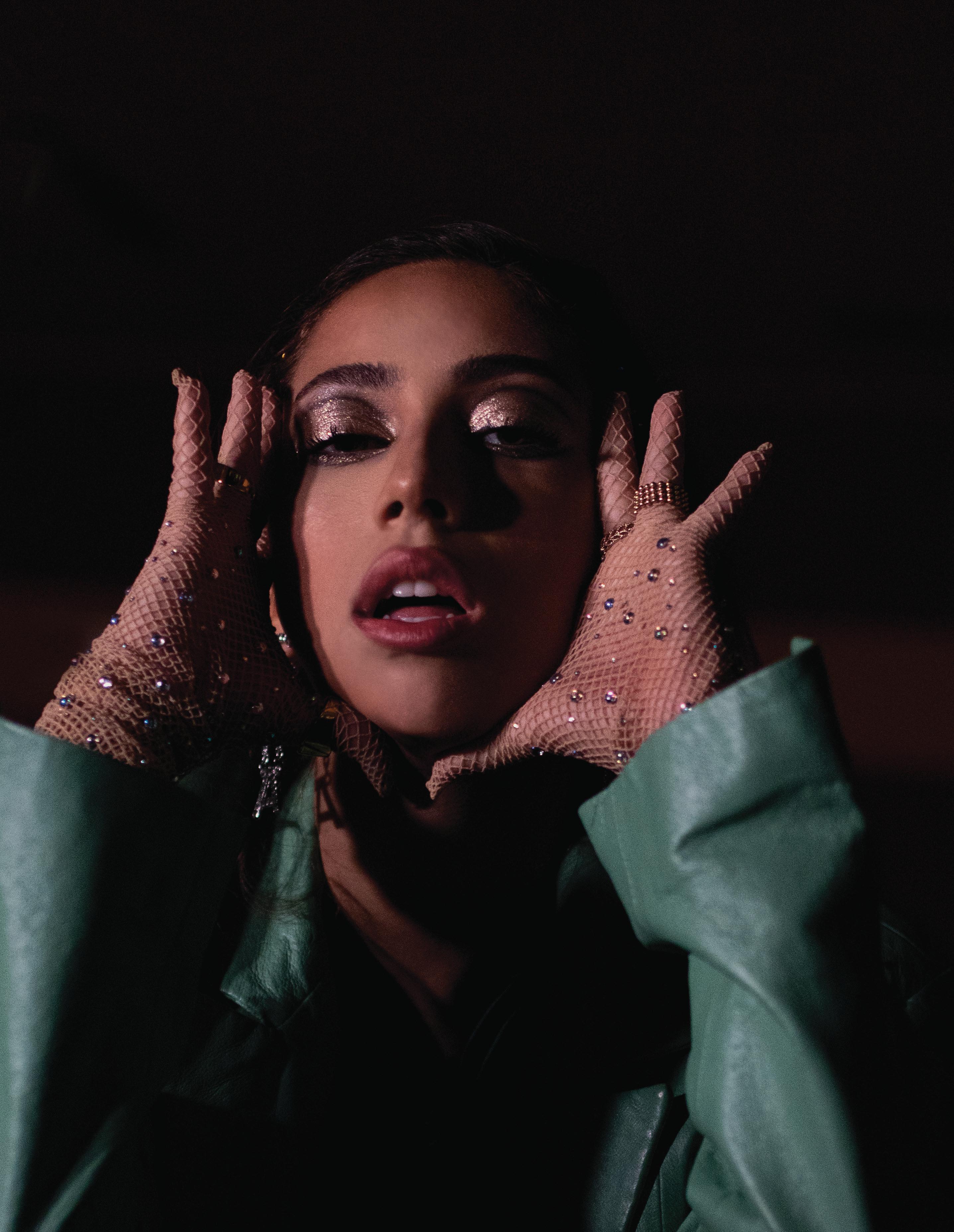
The year 2020 ushered in copious amounts of conflict, instability and uncertainty. Political unrest, threats to civil rights, a global pandemic and environmental desecration have generated inevitable tension and widespread feelings of hopelessness. Universal tragedies such as these have immense effects on the individual lives of those they touch. Moreover, the number of people who underwent anxiety screenings from January to September saw a 93% increase compared with 2019. Depression screenings also saw a 62% increase during the same time frame, as noted by Mental Health America. Overall, people are taking note of an overwhelming influx of adversities that are impossible to ignore -- and it weighs heavily on all of us.
Collectively, we are severely exhausted from the constant cognizance that there are countless ills of society we wish to change. Yet, we fight hard to be this change and put a great deal of pressure on ourselves while still enduring personal crises that may not be visible on the surface. As college students, our mental health is principally in jeopardy. None of us is a stranger to the all-consuming hash of school-related obligations, financial responsibility, social pressure and uncertainty about the future--never mind the aforementioned personal crises that are unique to us as individuals. Although our world is more interconnected than ever, this buildup of factors can make it impossible not to feel dissociated. When we’re struggling, we feel lonely, even when we aren’t alone. To protect our hearts, minds and souls, it’s critical to understand the immensity of the fact that while this feeling of isolation is warranted, the reality is that we are not alone.
In 2020, there is less of a stigma surrounding mental disorders and impaired mental health, which can be partially attributed to the increased amount of external factors weighing on us in the modern day. Still, we’re quick to diagnose mental disorders, especially in young people, without consideration for where or how the disorder may have taken root. We’re made to feel like there is something wrong with us -- that we’re abnormal. On the other hand, our distress isn’t taken seriously; rather, we’re pegged as melodramatic or emotional on a hormonal level. But as more people begin to vocalize their struggles and spearhead their
healing processes, it’s being made clear that imperfect mental health is becoming the standard. To be coping is to be in good company. We’re learning it’s okay not to be okay.
You most likely know someone who is weathering their own storm. Perhaps, that someone is you. While trauma is an individualized experience, it’s also extremely common. According to the National Council for Behavioral Health, 70% of adults in the U.S. have experienced a traumatic event. Whether it be grief, loss, abuse or childhood neglect, trauma spawns from a variety of occurrences. The hidden beauty in this catalogue is that the bane of your existence may be shared with someone who’s endured similar trauma or sustained something of equal effect. It isn’t to invalidate the struggles you’ve faced, and it’s not an attempt to lessen the impact of what you’ve gone through. Instead, it should serve as a reminder that when you’re at your lowest point, when you feel like there is nobody in the world who could empathize with you, there is someone who can. This idea is indispensable because, after all, misery loves company.
Shared pain unifies people. Suffering is an aspect of the collective human experience that substantiates how fallible we are as individuals. Yet even so, it’s remarkably common for those who are suffering to feel isolated during these hardships. The narrow perspective on life that trauma inflicts is a detrimental one because it gives us the false notion that to struggle is to be by one’s lonesome. In turn, this mental tunnel vision is what causes those in pain to feel helplessly alienated. But what’s invaluable to our emotional wellbeing is that as individuals, we overcome the “Why me?” complex and approach the realization that affliction is mutually endured. What allows the concept of compassion is this same principle -- because to feel sympathy for others, it’s necessary to first have an idea of what the aching feels like. Now think to all those who’ve ever shown compassion toward you.
Suffering is undoubtedly a shared experience because to suffer is to exist. So remember that somebody somewhere is silently suffering, too. Someone else somewhere has stumbled and feels like they may never be able to stand back up. When we acknowledge our unity in these sentiments, it makes the journey just the slightest bit more bearable.



PHOTOGRAPHED BY: Anna Carrington

Joey Whitley
“Just deal with it.”
What if we can’t? What if we shouldn’t? What if our personal experiences and external processes uniquely shape how we “deal” with things?
These what-ifs highlight the importance of cultivating a culture of clear, careful coping mechanisms to understand who we are, why we feel the way we feel and how we process these emotions. It’s not enough to swallow pain, to suppress trauma, to plaster a one-size-fits-all Band-Aid on tragedies. These surface-level actions do not heal wounds. Instead, they dismiss the hurt that’s worthy of being felt and tended to. They’re easy to pursue but ineffective in treatment, which ultimately leaves our emotions to linger in our minds and poison our hearts.
From stoic philosophers to hopeless romantics, we individually experience a remarkable range of emotions. Each of these feelings is valid, and they deserve care. However, not all emotions and coping mechanisms are created equal. Practicing proactive mindfulness and patience can allow us to develop a universal set of skills to understand ourselves, emerge from pain and grow through seasons of life.
Before we heal, we must feel. The first step in developing effective coping mechanisms is to identify the conflict you seek to resolve. Venture to the foundation of your feelings-- ponder what inspires this hurt. When did you begin to coexist with it? How does it impact your well-being? Associate yourself with these emotions, then acknowledge them.
For the internal battles that leave you feeling alienated, anxious or angry, look to emotion-focused coping mechanisms. This self-care style aims to

counter negative reactions to stress. Think, “How do I feel?” Stress is organic and often unavoidable; however, coping begins when we identify our stressors and the power they hold over us. Envisioning these stressors and the negative emotions they inspire physically departing our souls is an effective way to release and reduce their impact on us. However, do not merely let go and teleport to your “happy place.” Pack your bags, your supplies and your mindset of how to get there. Then, act on it.
Emotional-based acts come in the form of improving relationships, going outside, practicing mindful breathing exercises and other pursuits that give yourself back to you. Whatever it may be, take it slow. Center yourself. Remain present with your emotions and patient with your healing. Be curious about fear, and sit with discomfort. Search for and engage with what sets your soul on fire, what purpose you have to rise out of bed in the morning and what makes you the healthiest version of yourself. Understand that emotions don’t evaporate, but they can be coped with in a mindful way and pace.
Feelings are not unique to the poets and psychologists of the world. Even those who seldom express themselves have the capacity and compassion to cope with complexities. Unlike its feel-based friend, problem-focused coping mechanisms seek to resolve situations that inspire stress. Think, “What can I do?” This journey begins the

same: first, feel; then, identify. However, it differs from emotional-based coping in immersing yourself in the experience rather than the emotions associated with it. To engage in problem-focused coping mechanisms, ask for help. Look to friends, family members, a therapist and, eventually, yourself. To manage your time, say “no,” and set boundaries. Although you may not be able to alter your circumstances, changing your approach to coping with them will equip you with the power to overcome the aspects that inspire stress.
Emotions are ever-growing, and circumstances are ever-changing. However, pinpointing the stressors in life and crafting coping mechanisms that are unique to individual healing is essential for growth. Don’t merely vent about your feelings; navigate through them. Don’t drown in sorrow; rise above pain. Don’t avoid your feelings; befriend them. Take care of yourself, and know that it can, and will, get better.

Social media connects our global culture more than ever, but its constant link to reality has transformed us all into continuous audiences of global trauma. In the past year, we’ve witnessed protesters tear gassed by police officers in riot gear, rampant wildfires reducing expansive forests to ash and COVID-19 patients gasping their final breaths in lonely hospital beds. Every day, we stand as witness to heartbreaking tragedies while casually watching the news or browsing social media; it can feel like we’re drawing in the weight of the world’s problems. It’s disheartening and demoralizing to be hit with a stream of posts reporting police officers murdering Black people in cold blood or COVID-19 case numbers seemingly tripling every time we refresh our Twitter feeds. The overwhelming loss of the past year has left us struggling to under-

stand what -or if- we can do to anything to make the world a better place.
This perspective of hopelessness is, by nature, isolating. When we are only focused on the lack of impact our individual actions have on our environments, it’s easy to despair in the feeling that nothing will get better. However, it’s misguided to say that we’re meant to solve these problems by ourselves. Just like how we cope with the difficulties in our own lives by confiding in friends and family, the way to achieve societal progress isn’t by taking on the burden of change alone: it’s by making a stand as a community.
Community organization is the process of people banding together to defend the issues that matter to

them. This collaborative effort is based on the idea that there’s strength in numbers. No matter how much they fight, one person lobbying for the government to take action against climate change will go unnoticed. However, if thousands storming Capitol Hill with megaphones and cardboard signs demand for environmental legislation, government officials will feel the pressure to act. By highlighting the overwhelming issues our country must address, large activist groups force legislators to face the systemic problems plaguing our society.
While many young people today report feeling exhausted by current events, historically, students have been at the forefront of community mobilization efforts. Back in 1960, four Black college freshmen sat at a “whites-only” lunch counter in Greensboro, North Carolina and refused to leave until they were served, engaging in what is known as a sit-in. The students, known as the Greensboro Four, sat motionless as white patrons screamed obscenities and police officers threateningly rapped their nightsticks. What followed this act of blatant racism was a massive rallying of support from the Black community. Over the course of the four-day sit-in, a single act of resistance by four college students led to a movement of 300 students from across the state all peacefully demanding service from one lunch counter. Sit-ins inspired by the Greensboro Four sprouted in over 50 cities across the country, with young people showing up in droves to support the civil rights cause. When these persistent protestors garnered massive amounts of media attention, many lunch counters throughout the south felt societal pressure to desegregate, stripping their racist rule of refusing to serve people of color. This historic moment in the civil rights movement demonstrated the power of young activists and proved they were capable of coordinating action against injustice.
More recently, we’ve seen young people taking their lives into their own hands by fighting for gun control. When a shooter murdered 17 students at Marjory Stoneman Douglas School in Parkland, Florida, fellow students refused to be silent about their profound anger and grief over the loss of their peers. They quickly flooded social media with accounts of their traumatic experiences, describing how they locked themselves in cramped closets and classrooms to hide from the echoing
booms of gunfire in the hallways. They made pleas for legislators to take action, begging them to prioritize the lives of their peers and to finally put gun control measures into place to prevent similar tragedies from ever happening again. The students amassed the support of celebrities like Paul McCartney, Ariana Grande and Lady Gaga, who took to their platforms to raise awareness for the students’ cause. Having achieved global recognition, the students organized the March For Our Lives, a rally in Washington D.C. attended by 800,000 protestors and broadcast live to people around the world to have their voices heard.
These activists aren’t organizing out of empty promises - they’re choosing to do something about the issues that matter to them. Whether they’re fighting segregation or gun violence, communities bond and find their passion for social justice by channeling their anger and despair from societal traumas into productive action. When Franklin McCain, member of the Greensboro Four, was asked about his participation in the sit-in, he illustrated the ways in which his suicidal thoughts caused by segregation manifested into purpose-driven action. McCain claimed, “Almost instantaneously, after sitting down on a simple, dumb stool, I felt so relieved. I felt so clean, and I felt as though I had gained a little bit of my manhood by that simple act.” Finding and acting on our passions for combatting adversity can convert us from passive audiences of global trauma to active players in the fight against the world’s darkness. Choosing action over resignation to the status quo soothes our discontentment; it’s easier to grapple with people’s suffering when we know we’re actually putting in the effort to make their lives better.
In order to materialize our anger over the state of the world through measurable action, we need to work from the ground up. When activists begin to organize within their communities, they don’t immediately aim to march on the White House - they seek people who want to see the same change first. Rather than succumbing to the terrors of our society, we can find the strength to dispel difficulty by engaging in the relationships we have with each other. The bonds of communities are strong – when we care for one another, we remind ourselves why our lives are worth fighting for. By fighting for the people we love, we can be the driving force of progress.


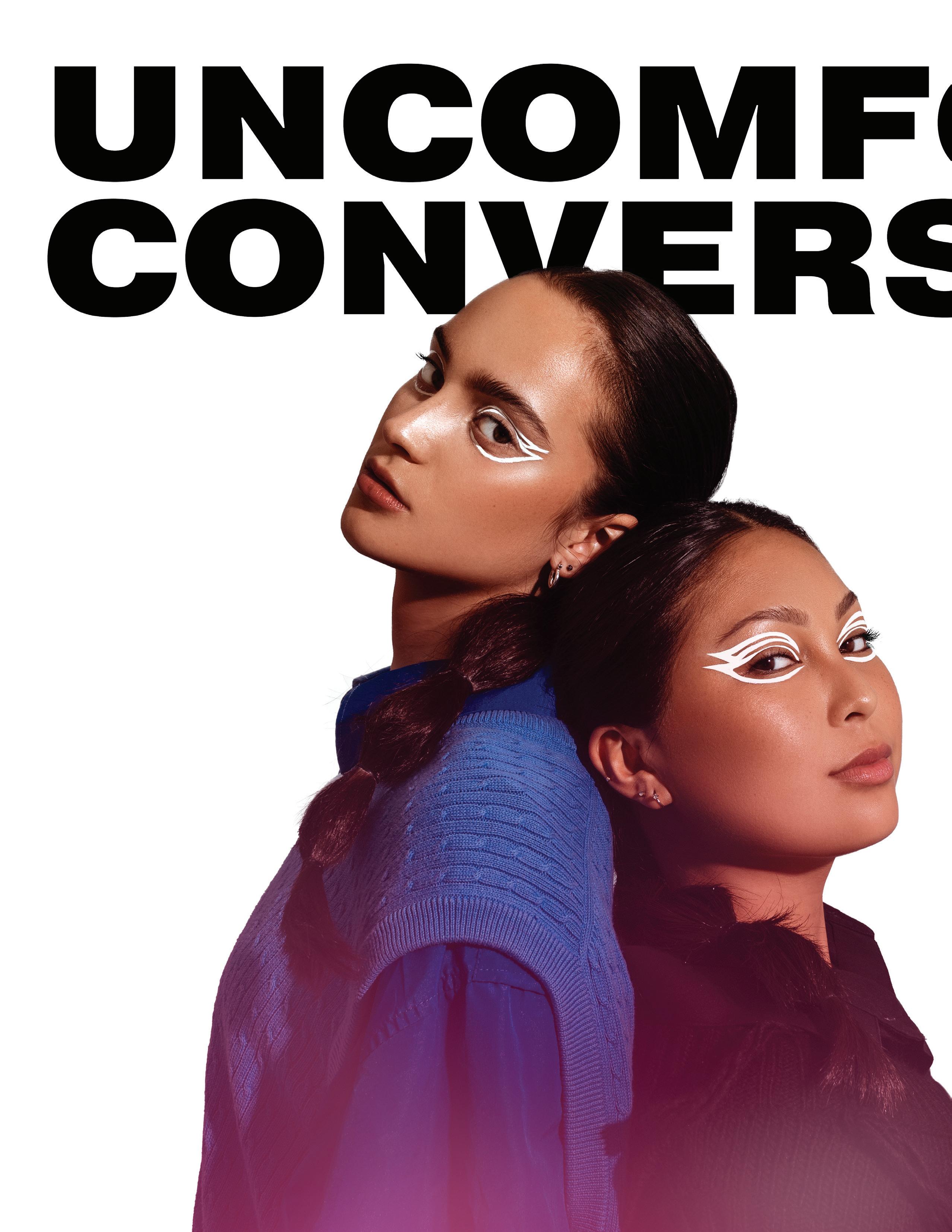
 Written by Jacob McLean
Written by Jacob McLean
2020 has been a year of reckoning for corporations and universities as the topic of racial injustice has catapulted to the forefront of people’s minds across the globe. The Black Lives Matter movement has been protesting police brutality and racial injustice since George Zimmerman, the murderer of Trayvon Martin, was acquitted in 2013.
However, the recent deaths of George Floyd, Breonna Taylor and Ahmaud Arbery have propelled the movement into the mainstream, leading to an inevitable discussion about race relations in the country.
The push for racial equity has sparked uncomfortable, but necessary, conversations on the topic of confronting systemic racism. Conversations like this are vital to progression of racial equity in the U.S., but they’re only the beginning of a process that must include tangible actions to hold the systems of oppression accountable.
Tyler Kimble is inspiring conversations at the University of Florida by using his voice as a leader. Kimble gets his outspoken personality from his family, all of whom have had to work harder to attain success throughout their lives. Kimble said as he matured, he realized that if he didn’t say how he was feeling and why he felt that way, he couldn’t rely on the next person to say it for him.
The 22-year-old senior public relations major is the president and a founding member of the National Black Public Relations Student Society at UF, the second chapter of the society in the country. Kimble said he understands it can be difficult for people who aren’t of color to approach difficult conversations, especially those who grew
up in households where the issue of race was never a topic of discussion. However, he believes this shouldn’t be an excuse to disengage in dialogue.
“Now is the time for the world to get uncomfortable, so we can start to make progress to a point where everybody can be comfortable equally,” he said.
After the death of Geroge Floyd, UF committed to addressing racism and inequity in multiple areas relating to representation, inclusion, opportunity and accountability. Despite this commitment, Kimble said he doesn’t feel like his voice, along with other Black students, is heard on campus.
“The conversation is happening, but actions aren’t being taken to progress our community,” Kimble said.
The amount of Black students at UF makes up only 6.97% of the total student population, according to enrollment data, which makes him question the university’s support and concern for Black voices on campus.
“When I first came here, it took me months to find the Black students on campus,” he said.
Kimble emphasized the comfort that a person of any culture has when they’re able to connect with people that share the same experiences and background as them, especially in college where there are a myriad of stressors, both internal and external, that impact students. Having a support system is crucial to coping with such stressors.
Kimble said he believes UF can take enormous strides in progressing the Black community by coordinating efforts to recruit and retain more Black students, including those who come from the demographics of low-income and low-mobility.
“Just because a high school may be a C- or D-grade school, or may be a school that’s predominantly Black or in an inner-city, that doesn’t discredit the fact that there are smart Black students who deserve an opportunity to come to a school like UF,” he said.
He emphasized the value a UF degree carries and how it can pave the path for success as students enter the professional world, and the insurmountable opportunity that could be afforded to an intelligent student from a low-mobility background.
UF taking steps to become more receptive to concerns raised by Black students is another way it can start paving the path toward progress, he said. However, he said he feels executives at UF fail to take the necessary steps to inform themselves on the issues Black students face on campus and across the country. For Kimble, the lack of detail in messaging from the school translates to a lack of empathy.
“We are the voices,” he said. “We are the Black voices that [UF] needs to hear to be able to communicate among those that hold power.”
As a student leader on campus, Kimble has conversed with other leaders of Black student organizations who also feel like their voices aren’t heard by those in charge, he said. They feel like they should have a seat at the table when it comes to voicing their concerns as they’re most affected by the school’s policies concerning race.
Kimble said President Fuchs should establish a direct, two-way communication channel with the Black student body to ensure concerns being raised are heard, especially as the president of a PWI (predominantly white institution).
“If [President Fuchs] took the opportunity to listen to Black voices and amplify them, imagine the shift in conversation that could happen,” he said.
This goes back to the importance of people and institutions initiating difficult conversations to open up dialogue for the action that can follow. When it comes to engaging in difficult conversations, it’s crucial both parties involved are meeting to respectfully listen to and communicate one another’s point of view.
One of the first things that someone should do when engaging in a conversation about race is to acknowledge their privilege, which is loosely defined as an unearned or unmerited advantage.
When it comes to the topic of white privilege, it means acknowledging the privilege associated with not having to consider one’s race as a determining factor in an opportunity or disadvantage.
This doesn’t mean that white people don’t also experience trials and tribulations. Instead, it follows that being white is not a contributing factor to that experience.
“If you just use a little bit of your privilege to advocate for other people and minority communities, you’re not only stepping out of your comfort zone, but you’re also contributing to progressing the community and country as a whole,” Kimble said.
He also stressed education being a crucial part of breaking down that barrier to gain an understanding of the issues that Black people face in America. This includes learning about the historical issues the Black community has faced in the U.S. and the systems that contribute to oppression. This can be done through literature, documentaries and other resources that break down the history of and how such systems work.
Another vital element of engaging in open dialogue is listening and being open to questions. Taking time to actively listen to why someone feels the way they do and internalizing it to confront your own implicit biases is a significant step in moving the needle toward progress.
Being open to questions is tied to being open to criticism for saying something that another person might perceive as offensive. When someone respectfully explains to you why something you said or did may be offensive, it’s important to listen and not gaslight them, which is defined as invalidating someone’s feelings about a topic. This opportunity to reach an understanding will enable you to make improvements so you don’t go about offending people in the future.
Lastly, approaching the conversation with empathy, not preconceived notions for those whose experiences are unique from your own, sets the stage for productive and meaningful conversation. This type of conversation contributes to the overall mission of addressing racial inequity within every aspect of our lives. Taking the time to learn about one another’s perspectives and backgrounds will make us better individuals, which inturn enhances our society, as we grow into influential leaders and listeners in professional scenes and the world at-large.
“This is a very easy situation,” Kimble said. “If people boss up and put their pride aside and be open to these conversations … then it can help people progress as individuals and open the door to so much more.”




“Empathy is simple yet difficult.”
So ponders Dr. Paul Burns, the Deputy Chancellor of School Choice for Florida.
Empathy is not just a simple emotion or reaction--it’s a science that requires intense brain functioning: “This capacity requires an exquisite interplay of neural networks,” Dr. Helen Reiss of Harvard Medical School explained. Empathy represents a deeper side of mankind, a unique capacity for recognizing that the world does not revolve around oneself. While natural instincts seem to dictate self-interest, empathy represents humanity’s special ability to step outside one’s feelings and struggles, and into someone else’s. This contrast between self-interested instinct and empathy is constantly in flux. It is not easy to exhibit empathy when

shared experiences, but shared emotions. Emotional intelligence is able to be developed. As people grow, as they broaden their horizons and experiences, the universality of emotions becomes more familiar. Embarrassment to show feeling is a naive trait that greatly fades with maturity. Tap into this knowledge when trying to empathize: that emotion is natural, that it is necessary. As our emotional intelligence grows, so does our capacity for empathy. While a person might be new to a very specific pain, they can understand pain itself. This is how empathy digs down to the humanity of others; it highlights that all people share the same capacity for feeling. It breaks down barriers and prejudices by forging connections through shared emotions.
So, what are effective ways to be mindful of
selfishness comes so naturally. This juxtaposition is the root of a common problem: failure to understand the pain of others that one has not personally experienced. Unsure of how to empathize to unfamiliar difficulties, many people refuse to even try.
“Individuals tend to have the most empathy for others who look or act like them, for others who have suffered in a similar way...The truth of the matter is that empathy is not always an equal opportunity benefactor,” found Dr. Reiss. This is reflected in our everyday lives. When someone’s grandparent dies, it is easier to empathize when you have also experienced the loss of a grandparent. When someone is diagnosed with a health issue, breaks-up with a significant other, or faces discrimination, empathy only comes naturally to those who have also experienced these pains. Yet, when someone is unfamiliar with a type of pain, they are uncomfortable around it, confused on how to react.
Battling this discomfort is necessary, however, for the effective functioning of our society. The notable point to understand is that empathy is mutable. This is because it does not rely on
circumstances that are not unique to our identity in everyday life? How do we empathize with experiences and discriminations that have not been personally faced?
Dr. Dre Graham, of the Florida Department of Education, recalled a time that he points to as the best way someone has ever empathized with him. When an undergraduate at the University of Florida, a fraternity brother made a racist remark. While Dr. Graham let it slide, another brother spoke out against it. Later, that same brother tearfully empathized with Dr. Graham that this was the reality for African-Americans in this country. This connection was not forged through a shared experience, but shared emotions. While Dr. Graham is a black, and his brother who defended him was white, empathy bridged the lack of shared history. The mutual realization of the horror of racism did not require that both experience it; only that both recognize that it affects others. You are not the number one, you do not need to only look after yourself. That would create an abysmal world. However, there is hope. Empathy carries us from simply instinctual, self-interested people, to beings with a deep capacity recognizing shared humanity.
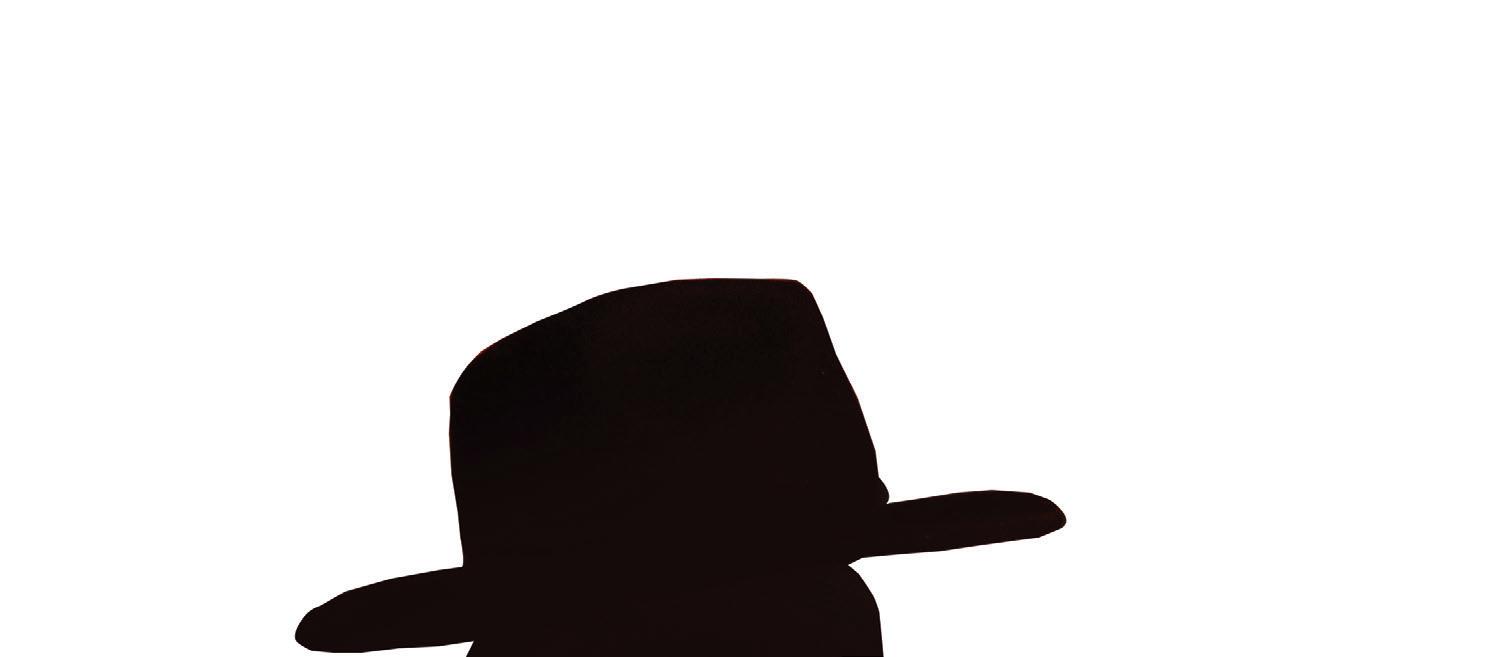


PHOTOGRAPHED BY:
Brieanna Andrews
Samy Asfoor
Paige Davis
Stephanie Garcia
Johann Vazquez





Recently, we’ve experienced a monumental change in almost every facet of our lives. The coronavirus crippled the economy, it distanced us from even our closest relationships, and it altered the definition of “normality” we once found comfort in. One particular business suffered immensely: the fashion industry. With fashion shows, collections, and photoshoots cancelled during the initial phase of the pandemic, the industry suffered through miserable weeks of despair and decline. As COVID-19 persisted, brands searched for creative ways to survive and adapt to the pandemic’s economic, social, and overall universal affect on society. The result was a positive response and resurgence from the quarantine period that paints a positive outlook on our future.
Initially, the fashion industry experienced their own challenges, especially financial hardships, due to the pandemic. The past seven months of quarantine cost well-established brands trillions of dollars— $2.5 trillion for the entire industry, to be exact. Nevertheless, some fashion brands purposefully perceived this adversity as an opportunity for growth, and they manifested original, authentic creativity into their work. They’ve accomplished this through revolutionizing the runway, redefining couture fashion lines and revisualising in-person fashion shows.
At the remarkably young age of 30, Simon Porte Jacquemus made a name for himself in the fashion industry. His creatively constructed pieces force any onlooker to question the article of clothing’s function, while also respecting its rare beauty. Known for his romantic runway shows, which are often surrounded by breathtakingly beautiful French scenery, Jacquemus insisted on continuing the artistically expressive event that is the runway tradition, regardless of the pandemic. The ambitious French designer flew in select guests from across the world to attend the Jacquemus
Spring Summer 2021 Show in the Vexin National Park. Set within a colossal field, Jacquemus took advantage of the barley as a mode of separating his audience in a covid-friendly manner. Jacquemus served his models with the perfect runway, crafted to uphold the necessary social distancing guidelines to maintain safety. In an interview with Vogue, Jacquemus explained a fashion show cannot be held virtually, for “it’s at the heart of what we do; it’s not superficial. It’s important to all of us to continue . . .”
But Jacquemus isn’t the only designer who knows how to break boundaries. Maria Grazia Chiuri, the Creative Director at Christian Dior, decided to change the fashion game altogether. In a film directed by Matteo Garrone, Chiuri showcases her miniature, surrealism-inspired fashion line. Pulling inspiration from Leonora Carrington, Dora Maar and Lee Miller, Chiuri spent her quarantine in Rome crafting a miniature fall haute couture collection. Drawing inspiration from Théâtre de la Mode, a travelling theatre of miniature fashion designed by Chambre Syndicale de la Couture Parisienne, Chiuri revived the theme and brought her cunning creations to life through Garrone’s lens. As a famous Italian film director, Garrone worked under Chiuri’s didactic instruction to capture the beauty of Dior’s miniature designs and showcase them to the world. Through this artistic pursuit, Chiuri was still able to pour her passion into her work, challenge herself by searching for a solution amidst the pandemic’s restrictions and advance her reputation. During quarantine, fashion became a beacon of positivity for the famous designers, and Chiuri revealed to Vogue, “In that [lockdown] moment that was so depressing, [designing] helped me to feel positive.”
Alexandre Mattiussi, an ANDAM prize recipient, had something large-scale brewing in mind for his latest fashion show. Throughout his career, Mattiussi
made various attempts to be successful in the fashion industry. Although his brand, Ami, originally failed in 2002, Mattiussi labored to achieve a grandiose vision, universal message and striking execution. When he relaunched in 2011, Ami ascended into the fashion realm alongside other high-end brands. Mattiussi had a dream for Ami, and he did his professional best to reach it. Recently, Mattiussi announced Ami would host a live fashion show, which would be streamed in Times Square. On October 3rd, Ami’s SS 2021 collection was displayed on the global stage as people everywhere could admire the clothes through a live-recorded stream of the fashion show. Resonating with Chiuri and Jacquemus’ sentiments toward the pandemic and its influence on fashion, Mattiussi said, “The show is a magical moment. It’s a rendezvous which is not replaceable.”
These genius designers financially struggled during the initial phases of the pandemic; however, they ultimately rose from the artistic ashes. Compared to other small fashion houses, Jacquemus has achieved success through steady online sales on his latest collection and adding more members to his team. Thanks to Chiuri’s genius miniature designs, Dior’s annual revenue increased a total of 12% over the coronavirus period, according to The Wallstreet Journal. Alongside their COVID-19 Business Support Program, Ami has excelled in comparison to other large-scale haute couture brands. Through fashion designers’ fierce passion and determination, luxury brands have managed to survive - and even thrive - amidst the pandemic, which sets an example to all of us that uncertainty and tragedy should





“When I was at the College of Charleston, I had a roommate that always returned clothing items,” Lilly Kline explains casually while sitting on the cool tile floor of Urban Thread, a Gainesville-based retail store offering trendy and affordable clothing options for the college student looking to shop locally and consciously. “She would buy clothes from different catalogues, wear it, clean off the bottom of the shoe or not even wash the clothes and just return it.” As Kline works to tag the latest Urban Outfitters inventory shipment, she fiddles with the tag gun while speaking in her calm, yet comforting voice as she describes the genesis of her lifelong business venture.
I was entering my fourth month of working for Lilly - or as her close friends affection ately call her, “Lil.” Up until this point, I’d heard only a handful of nostalgic anec dotes from the former years of the busi ness. However, I was dying to hear how Lilly Kline, a woman of color and Jamaican immigrant, founded Urban Thread over 25 years ago and grew her business into the Gainesville staple it is today. She chuckles describing her old college roommate, “I swear, I thought, ‘People really take that stuff back?’” To her surprise, not only are there millions of retail products returned every year, but also businesses across the country that partner with our favorite retail chains to give unwanted returns a second life before they hit the landfill.

In her final year at the College of Charleston, Lilly began fervently researching the product return process in her pastime. An important note about Lilly: once she has her eyes set on a conquest, she will never give up until she sees it through. “So I started calling J. Crew as if I had a problem [with a return], and I wanted to know the process of where the return goes,” Lilly explained. “Finally, after one year, I got to talking with John Kennedy, vice president of liquidation at J. Crew. He told me if someone buys a
ty to earn the capital needed to lease her dream storefront. However, she had no experience running a massive warehouse sale; but before she knew it, a trailer arrived with about 50,000 pieces of returns. There was no turning back. After renting a large conference room at the local Holiday Inn, “I went to the Tri Delta Sorority house,” Lilly explained, “and I told them they get first pick, at last-day price. Honest to God, I had twenty, maybe thirty girls lined up [to work] within an hour.” Once she had labor down, Lilly turned her attention toward getting the word out. “I bought the third and last page [of advertising] in The Alligator leading up to the event,” she beams, “... and the




morning of, I trashed the town with flyers. You hear me! They were everywhere.” Ultimately, this self-taught, business-savvy mindset led to the wild success of this four-day-long warehouse event.
After counting every last penny made during the event, Lilly nearly fainted when she realized she’d made over $113,000. “I sold everything,” she said, “and I remember thinking, I’ve got to do more of these.” With the capital needed to open her own business, Lilly finally leased from the empty storefront and continued her infamous warehouse sales twice a year for the next 10 years. This store was the very first Urban Thread; while storefront locations may have changed over the years, Lilly’s passion for this business venture never waivered. However, for lady boss Lilly Kline, it was never about the money or even the success of Urban Thread. “For me, it was all about family,” she explained. As the first of her family to immigrate to the United States, Lilly is passionate about supporting and uplifting the people she loves. She hopes to one day pass down Urban Thread to her 10-year-old daughter, Harper. Now, as Urban Thread has stood as a celebrated Gainesville essential for the past two decades, Lilly cares for this community as if it were her own family. “Last week, a girl came in and said, ‘I’ve loved your store since I was a little girl! When my sister was in college at UF, me and my mom would visit her and always come here,’” Lilly reminisces, telling of the multi-generational connections manifested through this store. “As I get older - I mean I don’t feel older - but I think I see [the ways] in which Urban Thread has become part of the Gainesville culture, and I love it.”


Religion can be viewed as an object of division — at least, to those on the outside of one. For those within a given faith, it’s the same opposed set of values and beliefs that opens the door to deeply emotional and unparalleled relationships.
This aspect is a blessing applicable to any creed, and the overlap hardly ends there. When confronting that — despite differences in doctrine, divine belief and denomination — each form of worship strives to instill a better sense of self in its followers, it takes no crusade to point out the parallels in their encompassing aspects, both practically and compassionately.
Meditation, while often viewed as synonymous with
paths like Buddhism, is a widespread practice. In its signature faith, it involves channeling internal states like calmness, concentration and one-pointedness through the forces of hearing, pondering, mindfulness, awareness, effort and intimacy, according to the BBC. In Buddhism, the practice of meditation is consciously employing particular techniques that encourage these fundamentals to arise.
In the same way, meditative practices encompass other ways of life like Taoism, involving breath control meditation to facilitate the enlargement and relaxation of the mind to achieve “qi” cultivation, according to News Medical. Similarly, in Christianity and Judaism, meditation can be used as a form of prayer to attempt to reflect on and gain an understanding of the divine

through introspection. Even in more recently developed religions like Sikhism, which has origins in Hinduism and Islam, meditation can be seen as a cornerstone and commonality. The Sikh “simran,” the Islamic “muraqabah” and Hindu forms of yoga place an emphasis on harnessing the body in an effort to attain self-realization, divine connection and enlightenment. The clearing of the body and mind is a ubiquitous objective.
This physicality is directly connected to more abstract values — namely, kindness. For instance, “metta bhavana,” or the “development of loving-kindness,” is a generative Buddhist meditation that serves to develop an attitude of loving-kindness using memory, imagination and awareness of bodily sensations, according to the BBC. While only one
Testaments, between an early presence of the ethical principle in Buddhism, Judaism, the beliefs of ancient Egyptians and countless other civilizations, the mention and meaning of empathetic ethics aren’t lost in phrasing or translation. Along with its place as a centerpiece in every major world religion today, theologies agree: kindness is key. It cannot help but coarse through endless followings, consistent with the optimistic belief that this is natural and ideal human disposition.
Noticing similarities between teachings isn’t about stripping these sects of their identities. Even between sub-denominations, there can be many easily differentiated interpretations of one umbrella faith. Rather, discerning them facilitates the discussion of these differences in light of their parallels. Acknowledging base variances is essential in attaining a global understand -

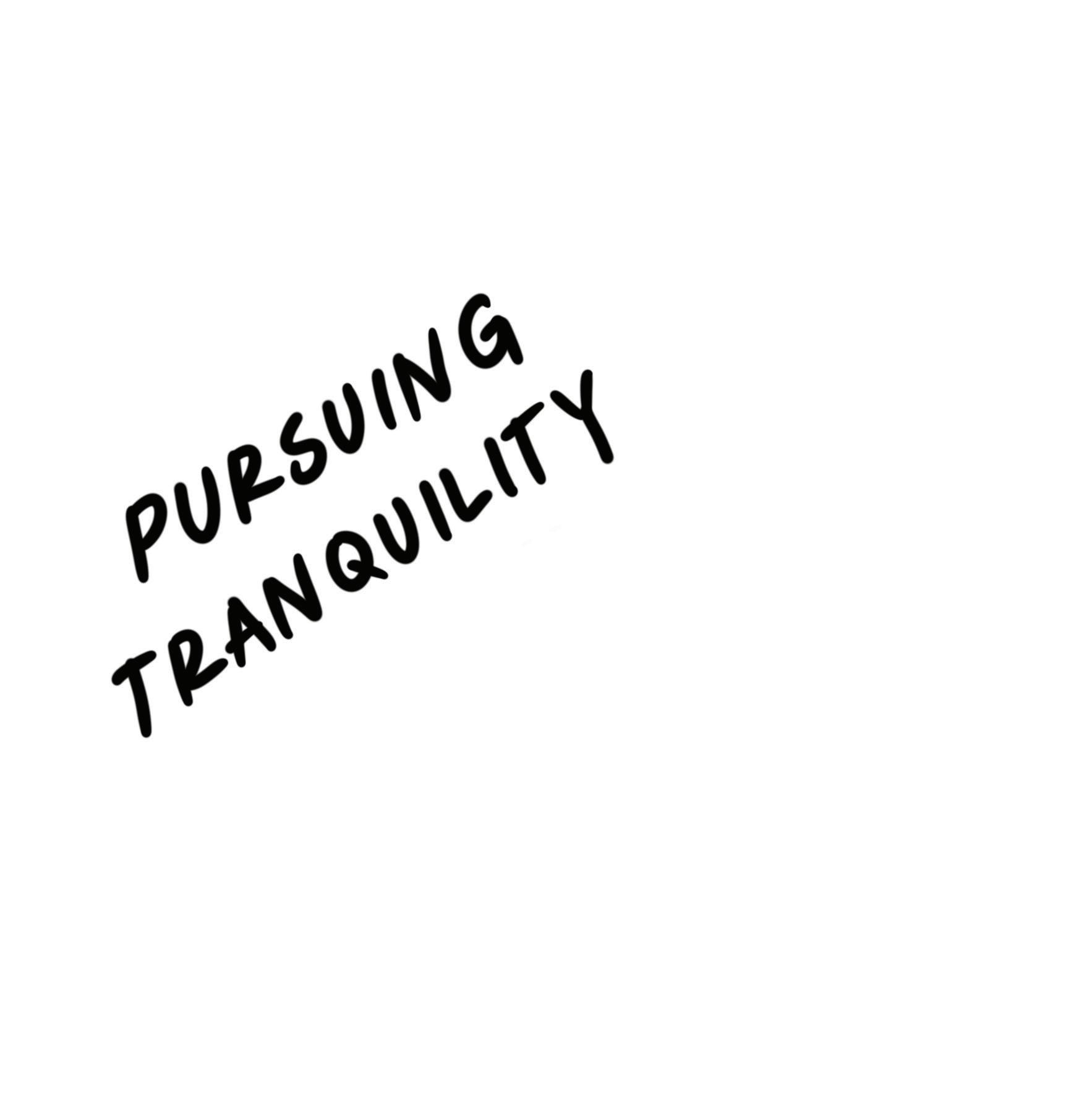
In celebrating and understanding differences in people and religion, it doesn’t hurt to point out where they rhyme — especially if it constitutes being kind. As the 14th Dalai Lama came to believe himself, “compassion — the natural capacity of the human heart to feel concerned for and connection with another being — constitutes a basic aspect of our nature shared by all human beings, as well as being the foundation of our


2020. Ugh. Everyone is not-so-patiently waiting for the ball to drop on this sorry excuse of a year. On the global celebration that will be January 1, 2021, people seem to be expecting that everything is going to snap back to normal.
Except, it won’t. 12:01am on New Year’s Eve is not a magic portal that will transport us to peace. What seems to be escaping everyone as this year closes is that, in life, there is always going to be another challenge, another source of confusion. When coronavirus is no longer rampant, when the election dust settles, when 2020 ends, there will be more struggles to face. Over and over this year, people have repeated cliches about these ‘unpredictable and unprecedented circumstances;’ but these circumstances are most likely not the only unpredictable ones to occur for most. In reality, bad things happen all the time. Perhaps the difference about this year’s events is their global nature--coronavirus shut down the world. But, the struggles of life will not end with 2020. The unpredictability of unfortunate events never ends.
Yet, the continuity of struggle doesn’t stop us from hoping for the moment when we will reach a differ-


ent time in life--a perfect time. It does not stop us from believing that, perhaps, utopia is somewhere around the corner--whether it be with the advent of 2021 or not. We all seek a time where all our dreams are achieved and no more struggles exist. A time when we wake up and see the words: “Welcome, everything is fine! You are now in the good place.”
At the lowest point of life, there is nowhere to go but up. In ‘utopia’, there is nowhere to go at all. Endings are naturally bittersweet; and often we console ourselves by thinking that when one door closes, another opens. But in a state of perfection, there are no more doors. “The Good Place” means no more journeys, no more doors, no more growth. It’s a stopping point.
Despite it being the most common conception, the idea of a ‘perfect’ utopia presented seems to be flawed. Imagine the beauty of conquering life. Everything has been bested by you, there is nothing left to achieve. Time to celebrate victory. Then what? How long does the gold glitter? Or was it always fool’s gold?
David Foster Wallace, a prominent writer from the late 1990s and early 2000s, said in an interview that seeking the “brass ring”, or those things that you think will lead you to a place of perfect happiness, never end up leading you to that destination. What leads to true freedom is not utopia, Wallace says, -- but involves “attention, and awareness, and discipline, and effort, and being able truly to care about other people and to sacrifice for them, over and over, in myriad of petty, little, unsexy ways every day.” Success, power--everything society equates with perfection--are not the beautiful things of life. Perfection, used in this manner, is a superficial word defined by superficial rewards. If the highest things attainable in life are as material as success, then what is lasting?
When 2020 ends, there will always be more hurdles to overcome. The closing of this chapter does not close the confusion of life. There is a way to continue--however, and that is to dig deeper than the idea of perfection that society endorses. This constancy of confusion in life is not something to be afraid of. Somewhere deep down, we find our deepest joys in the challenge. Overcoming an obstacle, persevering through difficulty, finishing a race--our humanity cherishes these moments more than the quiet that follows. Partly because of what they show us about ourselves as humans, partly because of what they reveal to us about all humanity. The worst times in life open one’s eyes to the struggles of others. These days open your eyes to the inane nature of the fool’s gold you thought was real. These days open your eyes to both your strengths and your flaws. Ultimately, the self-awareness that comes from struggle develops you into a better human. Thus, the attention, awareness, discipline, effort and empathy that Wallace defines as the true perfections of life emerge from this confusion, from the struggle of life itself. This sense of perfection is as deep as the alternative is superficial--it’s lasting.
Perhaps 2020 is not something to be clamored over as we race for peace and happiness, or our notions of peace and happiness. Grappling with the ups and downs of life is not always going to feel like perfection. But take pride in the fact that they are not. You are a deeper person than society’s vision of perfect utopia can satisfy. Remember that everything being “fine” is not enough. There is so much more to life than that weak definition. Remember that your full potential lies in the qualities of true perfection, not the superficialities of false perfection.

There is nothing like five months at your childhood home to throw you right into your past. For many of us, our extended stay back at home with our parents and siblings was almost like time traveling back to high school -- leaving us feeling like we had never even grown up. The personal development and independence we thought we gained in our time away from the nest seemed all but lost on us. While this may be true as we indulge in home-cooked meals and cuddles with our childhood stuffed animals, oftentimes, it takes revisiting your past to truly move forward.
This retroactive return to our childhood homes was a different experience for everyone, one that could be characterized as difficult, heart-warming or both. Calls to mental health and suiceide hotlines soared. Compared to early 2019, the amount of people experiencing anxiety and depression tripled. Places that were once a refuge to many, such as schools and churches, aren’t necessarily safe, socially-distanced safe spaces anymore. Today, with turmoil in almost every aspect of our lives: economic, political and social, there is no doubt we’re all experiencing some degree of this global, collective trauma. Quarantine, isolation and social distancing are new, significant mandates created with the goal of saving lives; and we’re all experiencing an unfamiliar reality. These changes have inspired hurt, however, they have also created time and space for personal reconstruction also known as Post Traumatic Growth (PTG). Scientists and trauma survivors define PDG as finding greater purpose, spirituality, empathy, appreciation of life, as well as strengthened relationships in collective trauma. With all the pain and sorrow the pandemic forged, Covid-19 also ushered in empathy and greater sense of togetherness. In isolation, we found comfort in taking care of eachother and connecting in alternative, yet meaningful aways.
In between binge watching our favorite sci-fi series and baking of banana bread, quarantine garnered a moment for introspection-- the key to self-growth, manifestation and development. We took time to look back into our past, mistakes we may have made or events we could have handled differently. Self-reflection is never easy, but is essential for moving forward. From here, we can rebuild and reframe how we view our pasts and the various truths we’ve assigned to ourselves, personalities and capabilities. Ultimately, introspection begets understanding: of our pasts, current realities and
endless possibilities for the future. In isolation, the world was forced to spend time reflecting, forced to have difficult, yet necessary conversations.
Quarantine was an immensely different experience for everyone. Some manifested change and growth in this time of solitude; for others, growth is best done out in the world, surrounded by people. Wherever you stand, looking back is never a bad place to start in your journey to move forward.



PHASE 1
Katalina Enriquez
Ryan
Jeff
Sierra Tagman
Steven Bacall
PHASE 2
George Cameron
Valeria Jubes
PHASE 3
Daniel Iscoe
Gabi Purcell
Grace Rodriguez
Justin Docal
Lee-ann Tanza
Phase 4
Eloise Burgoingie
Mary Childs
Jacob Fuhr
Uza Kojo
AND A SPECIAL THANK YOU TO
FOR SUPPORTING US IN OUR CREATIVE ENDEAVORS



